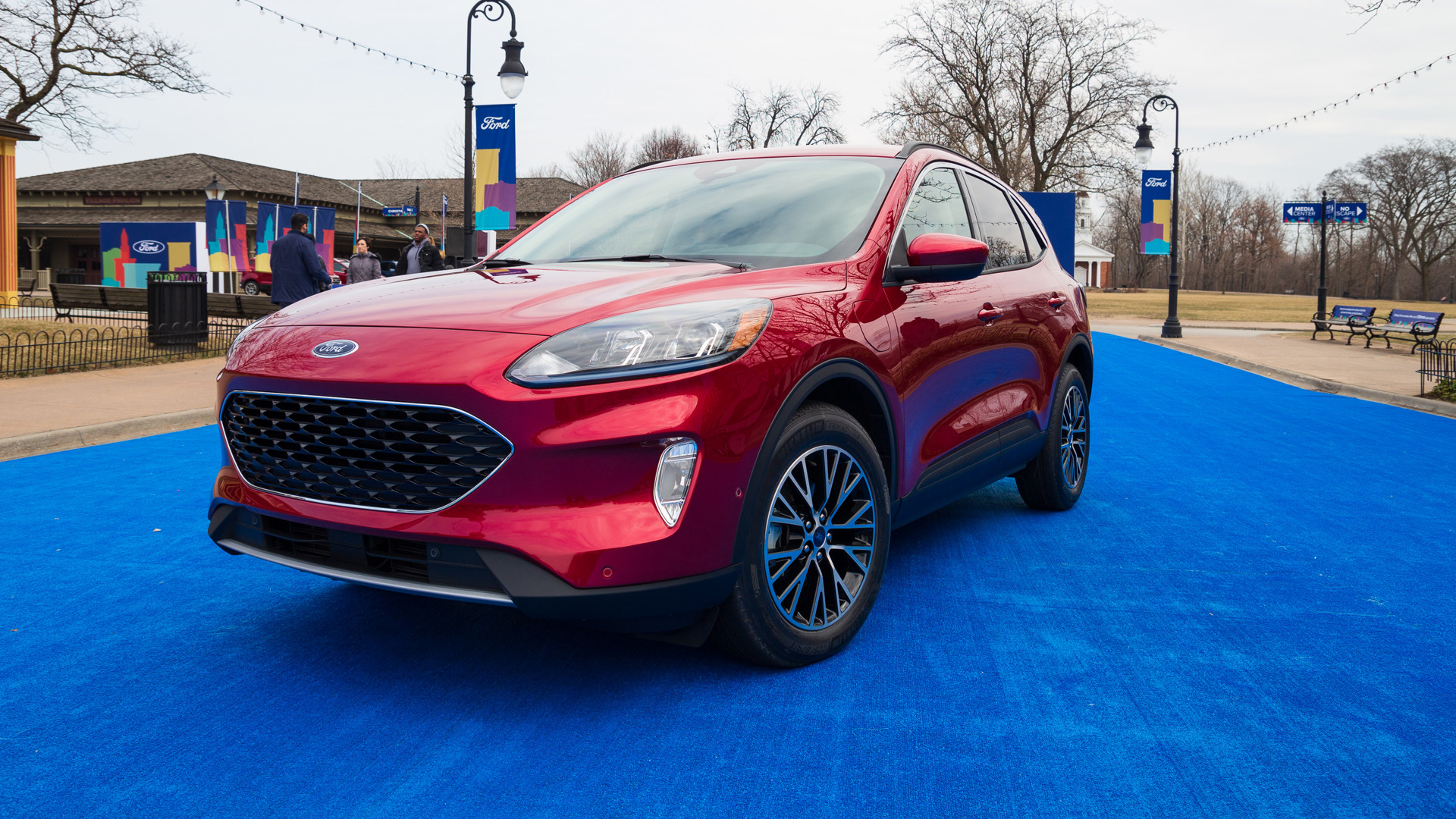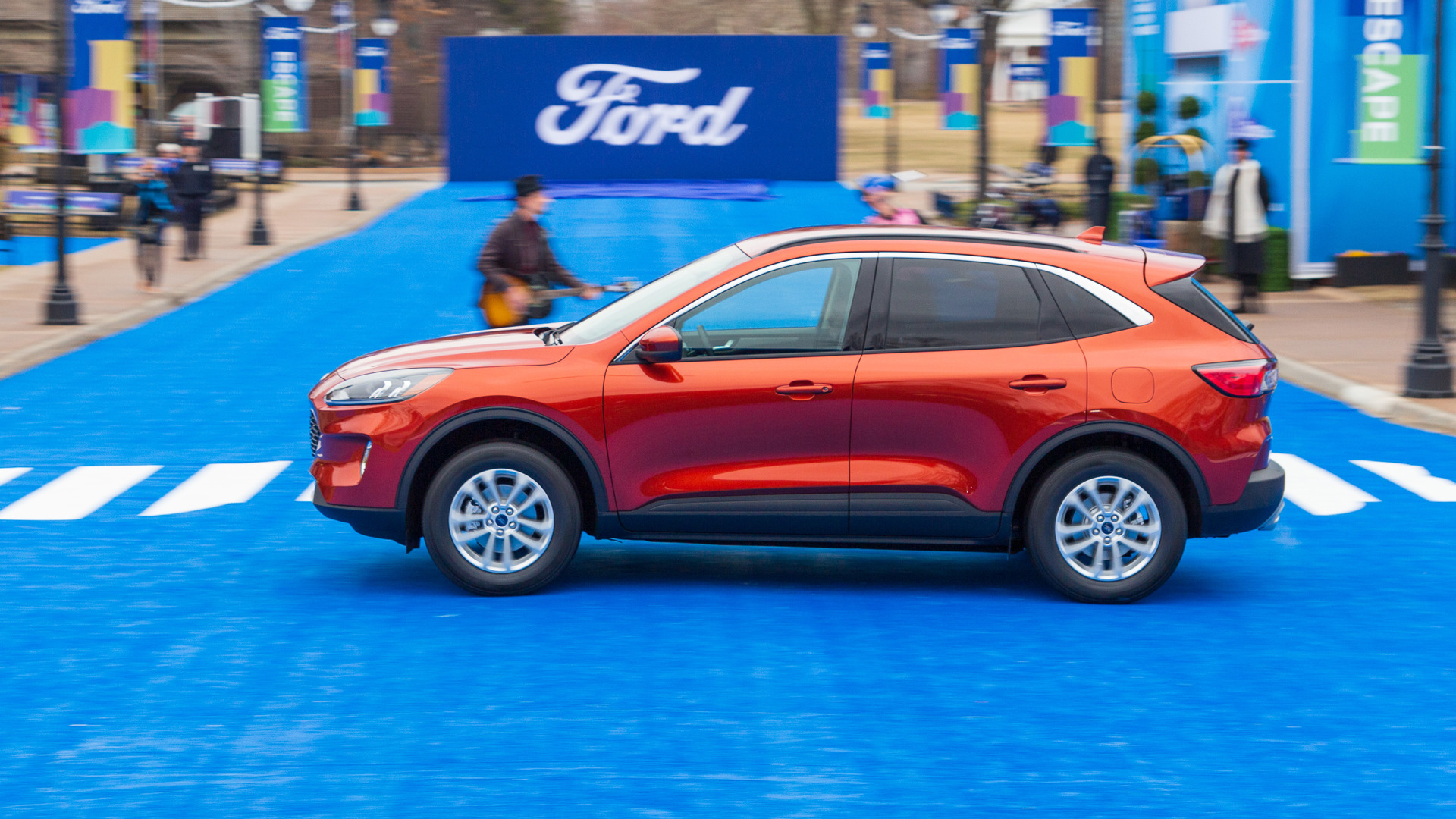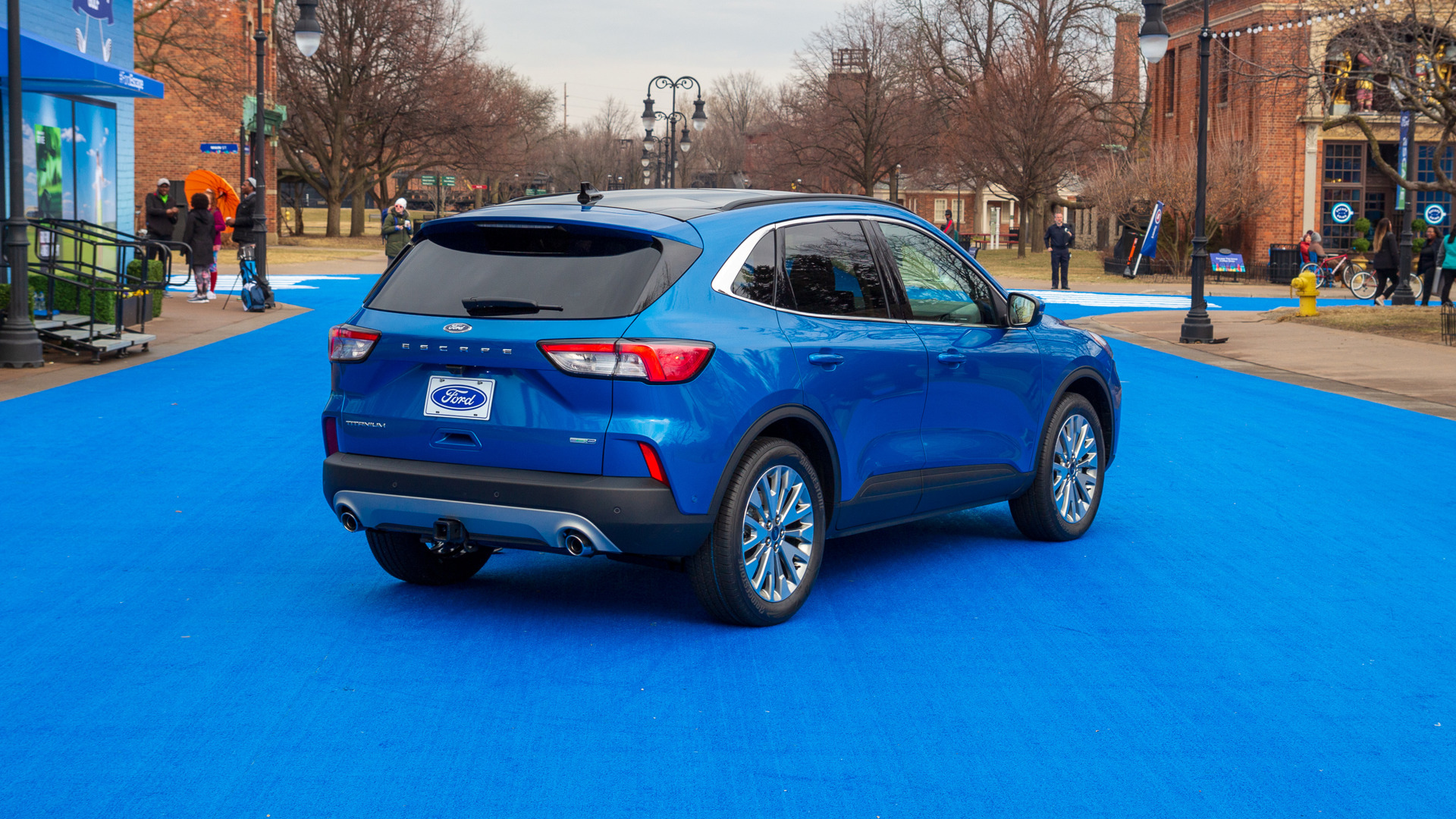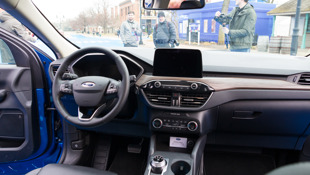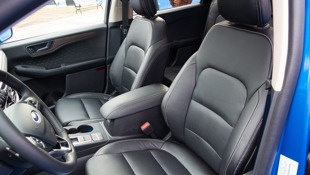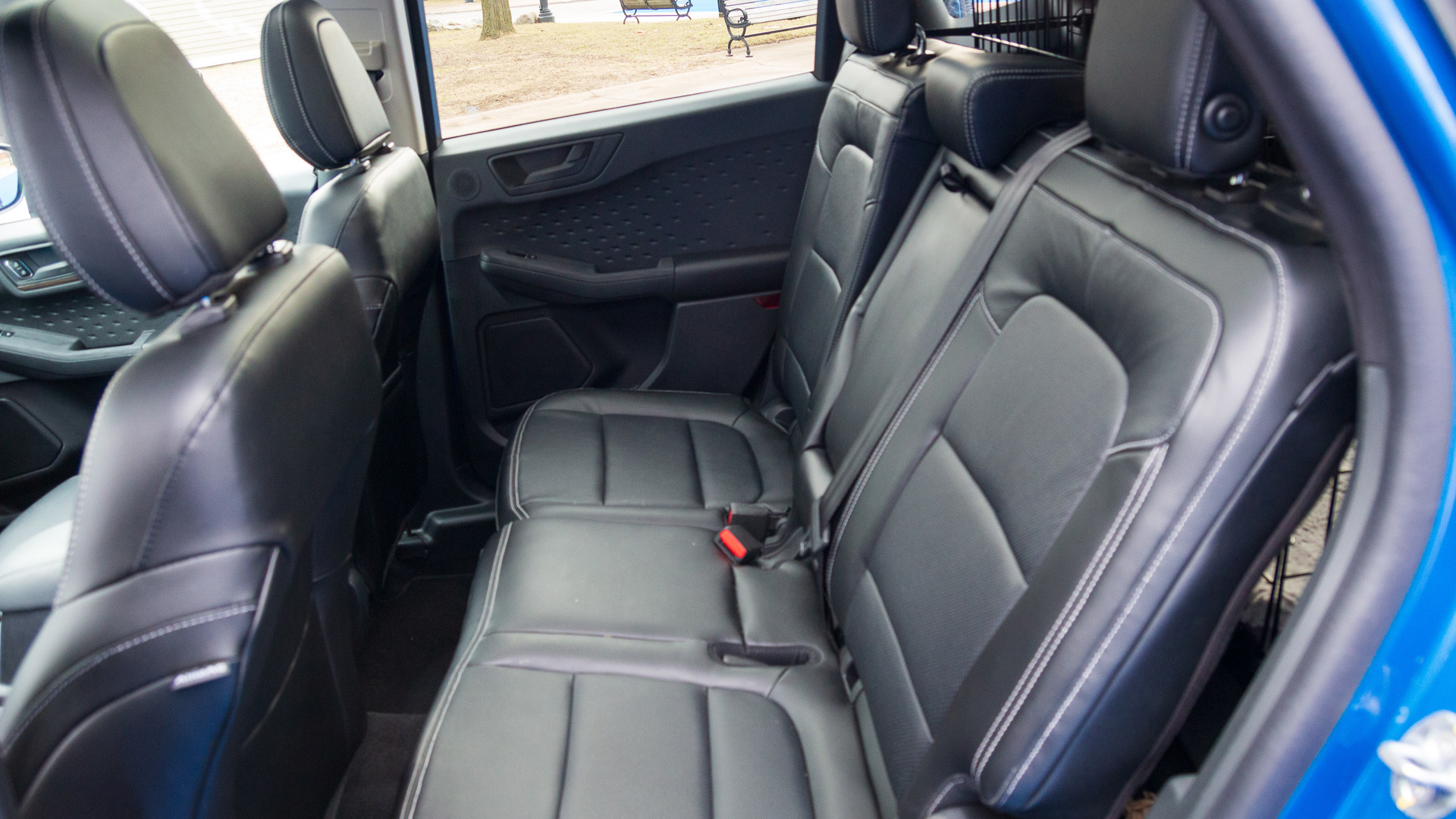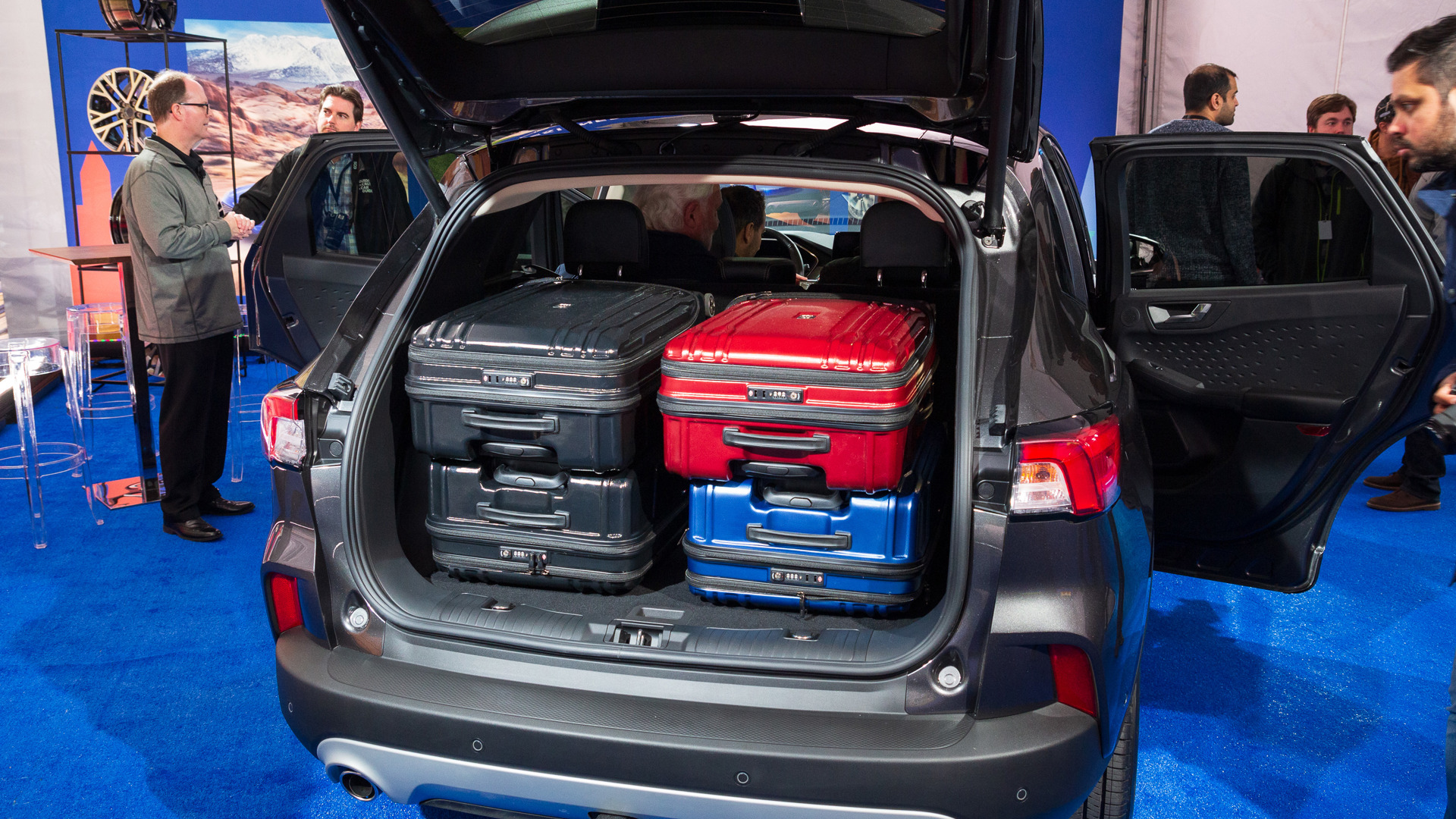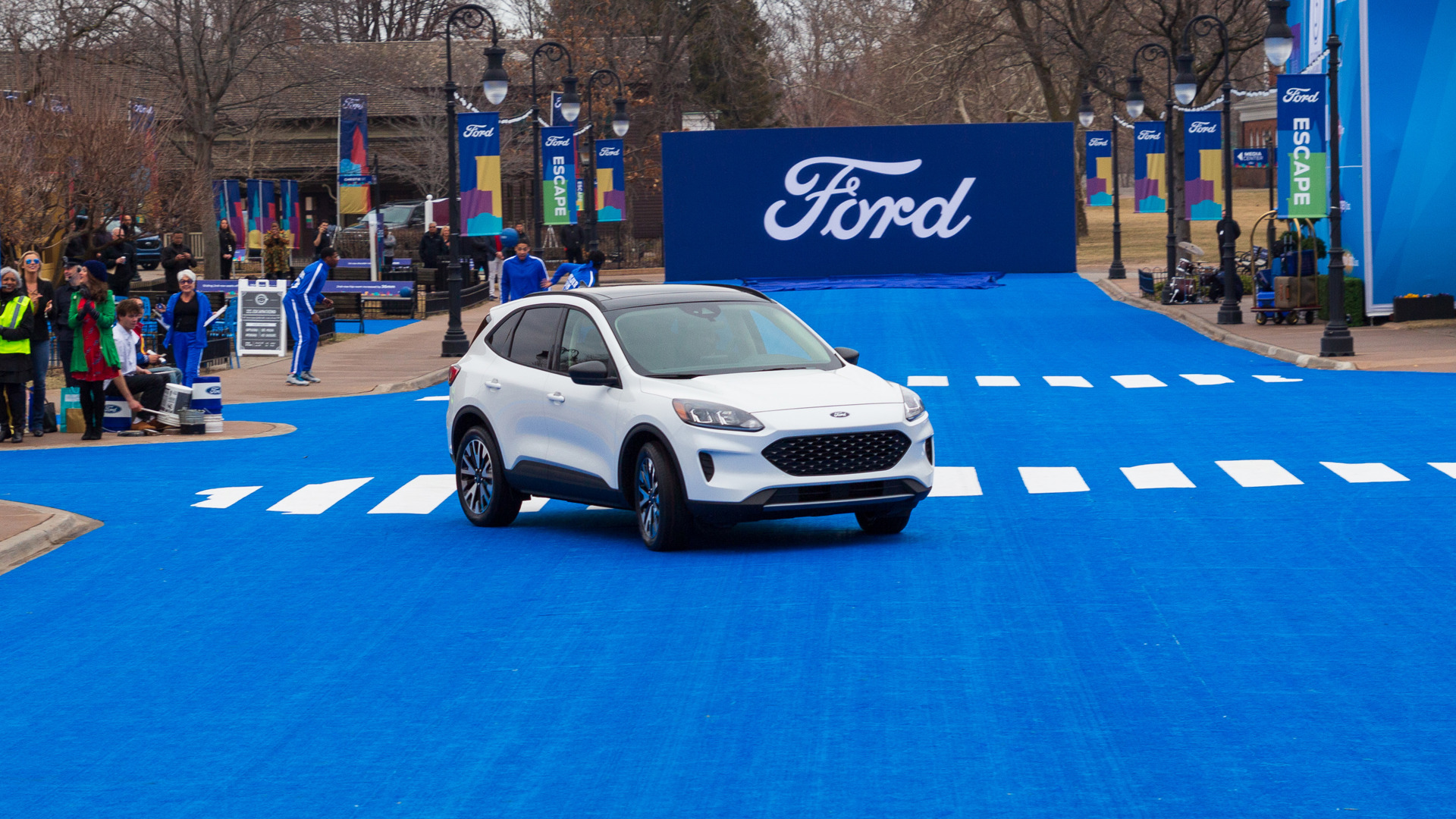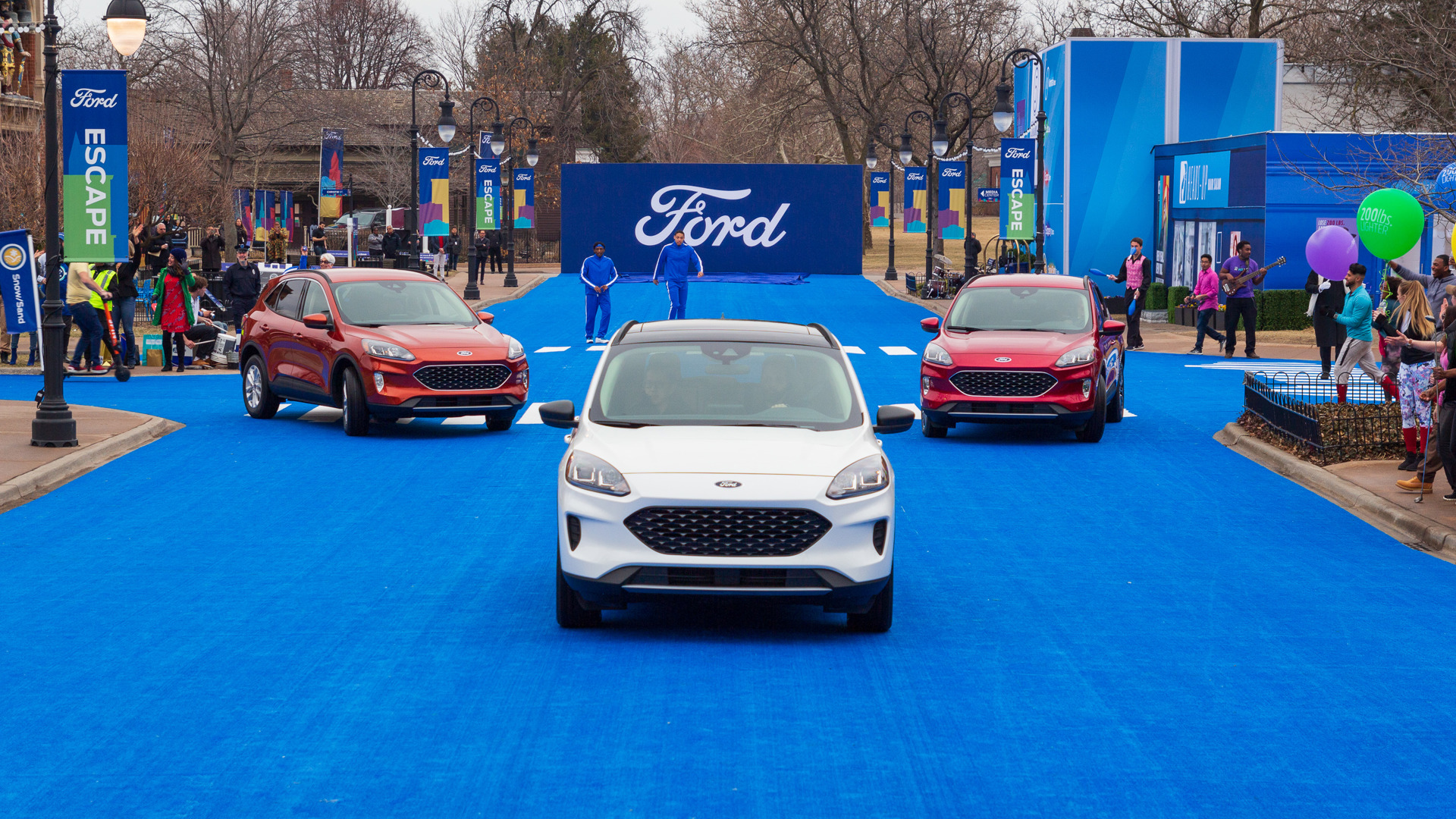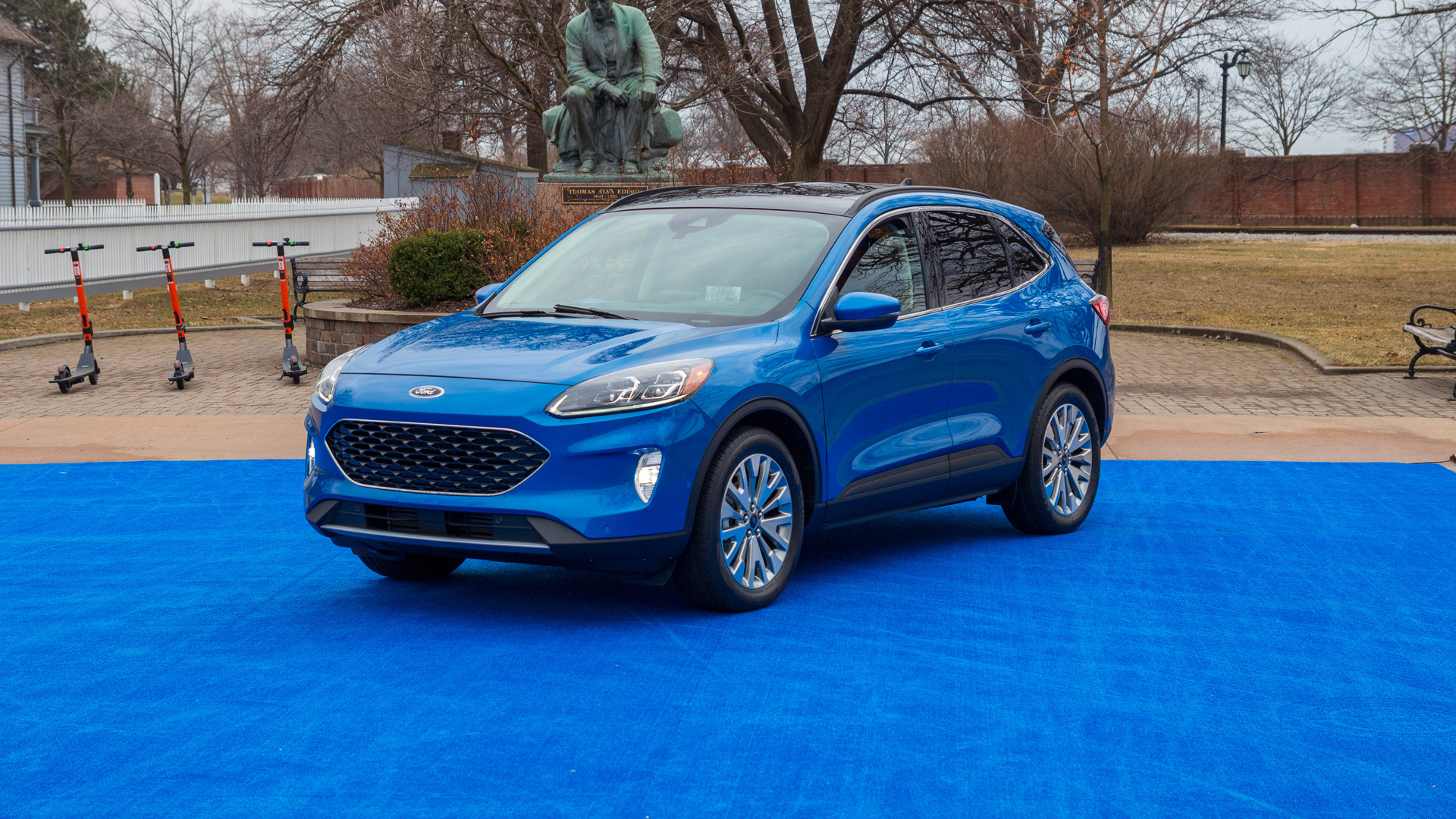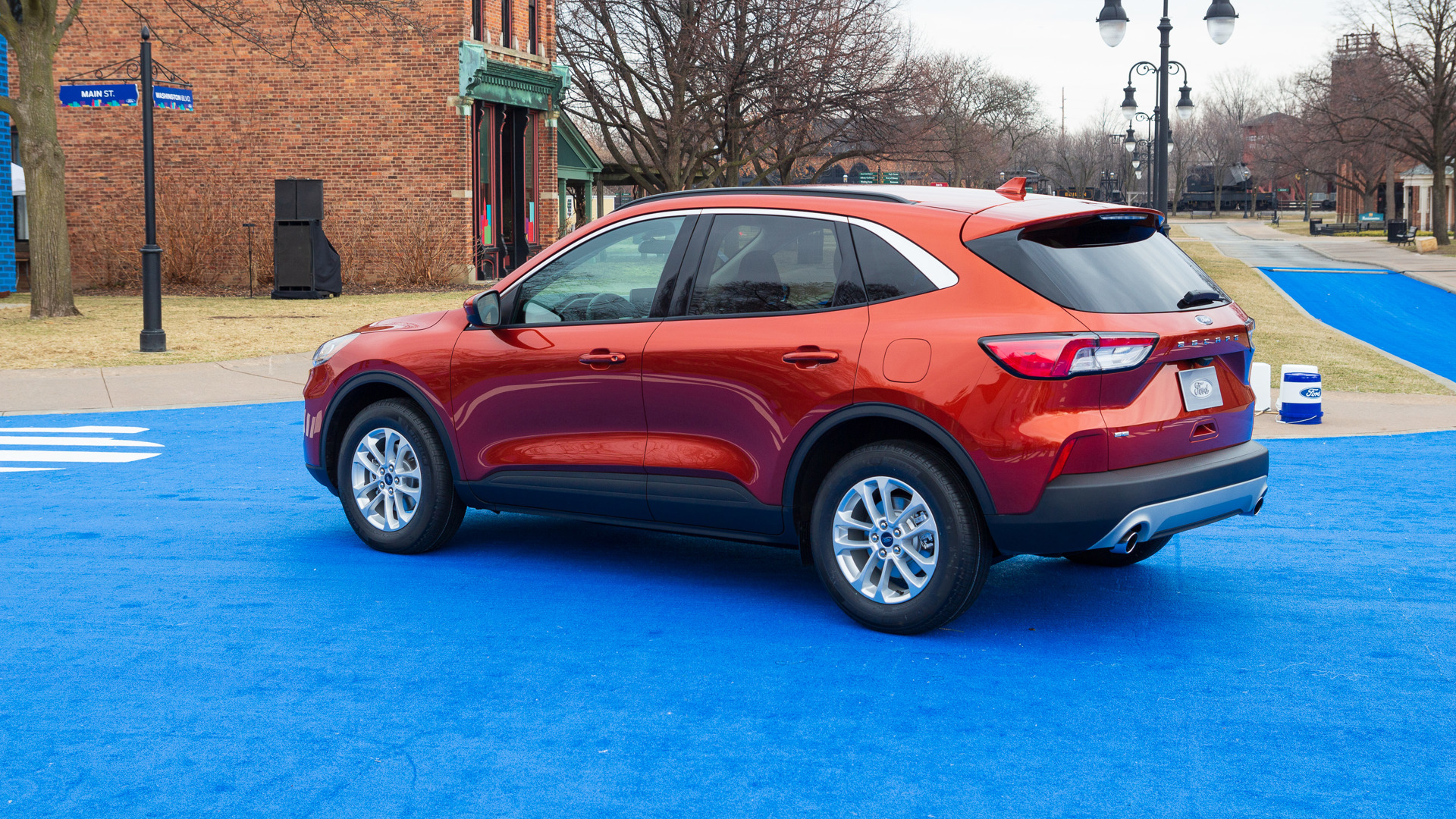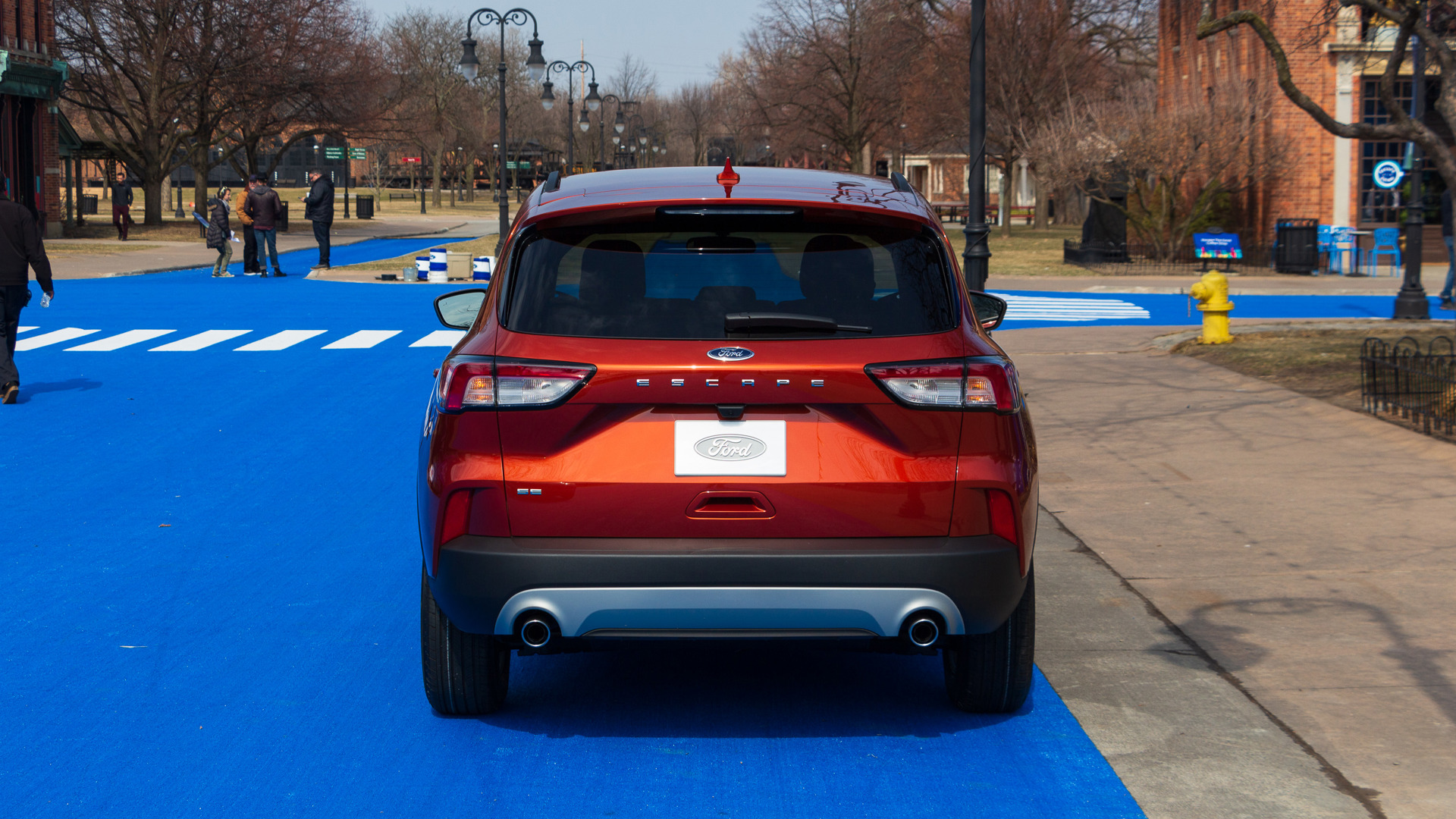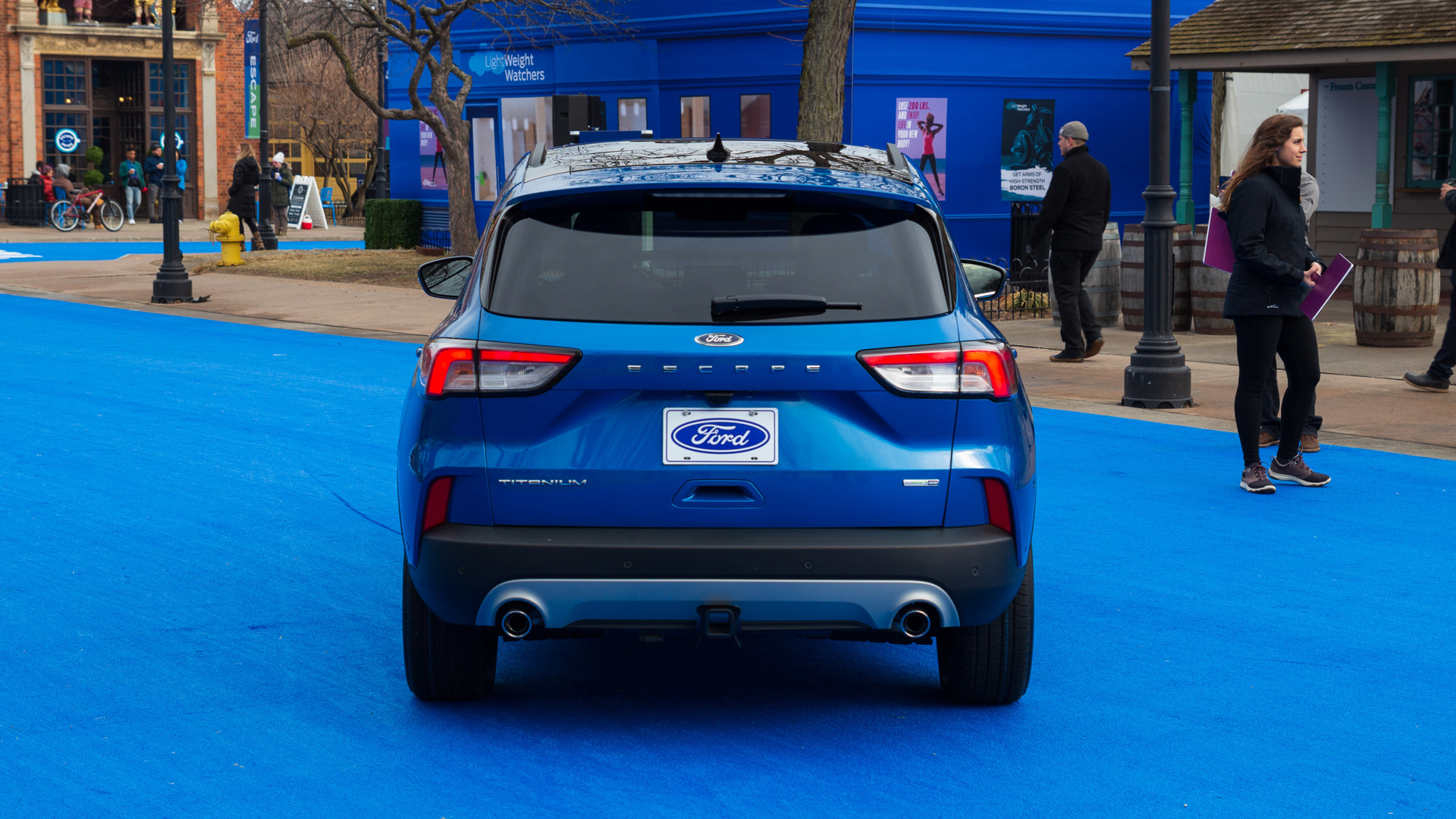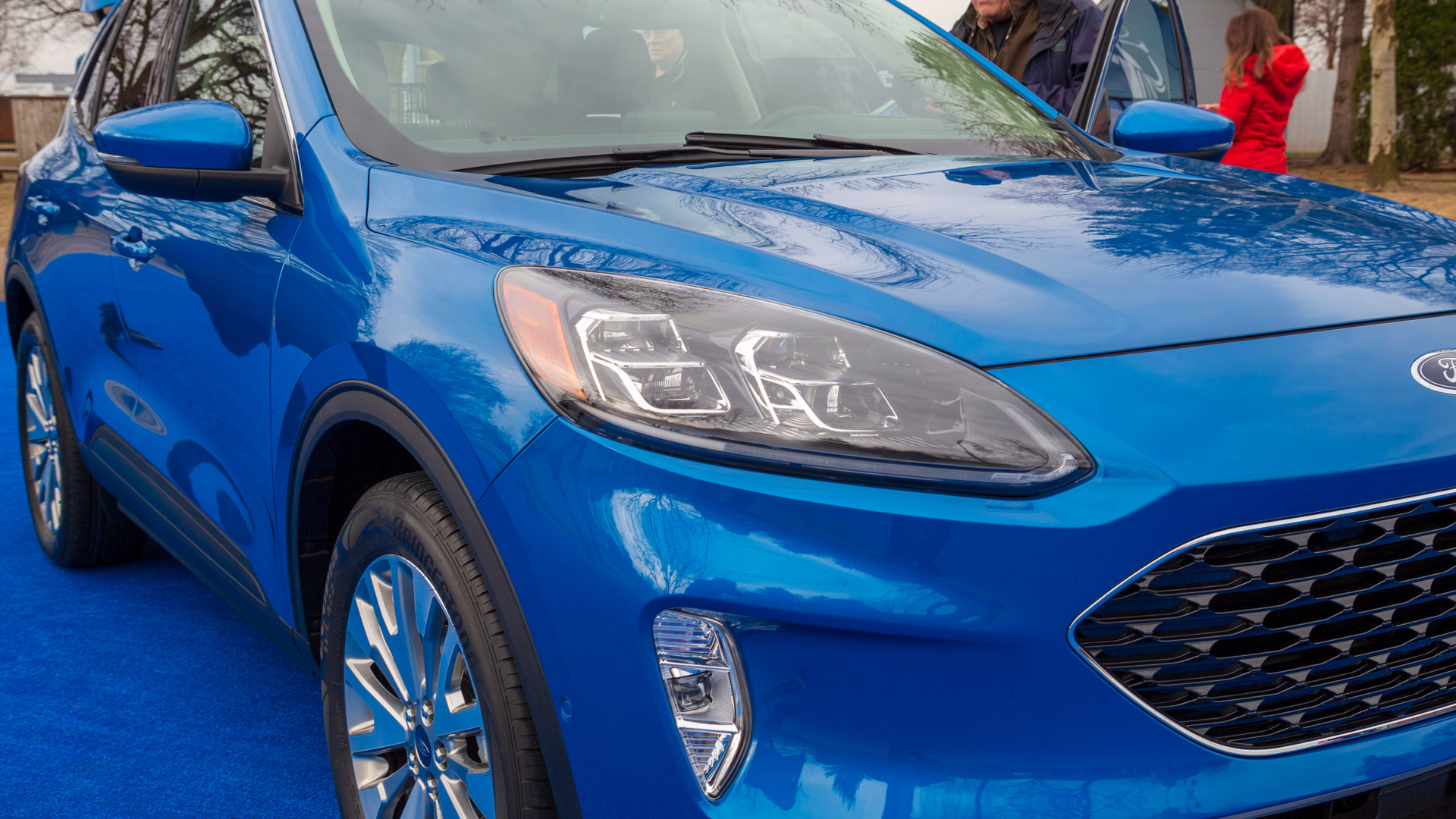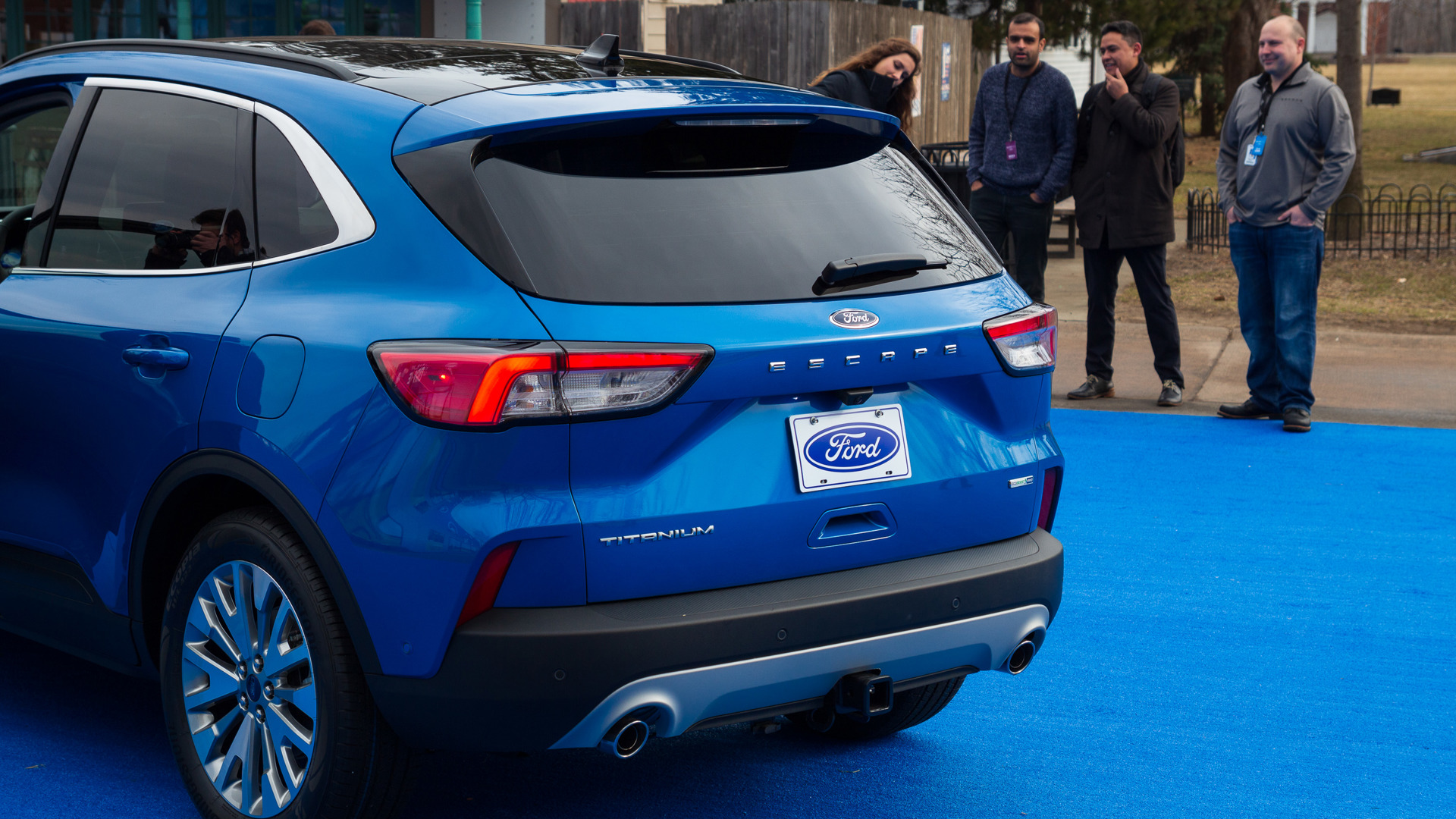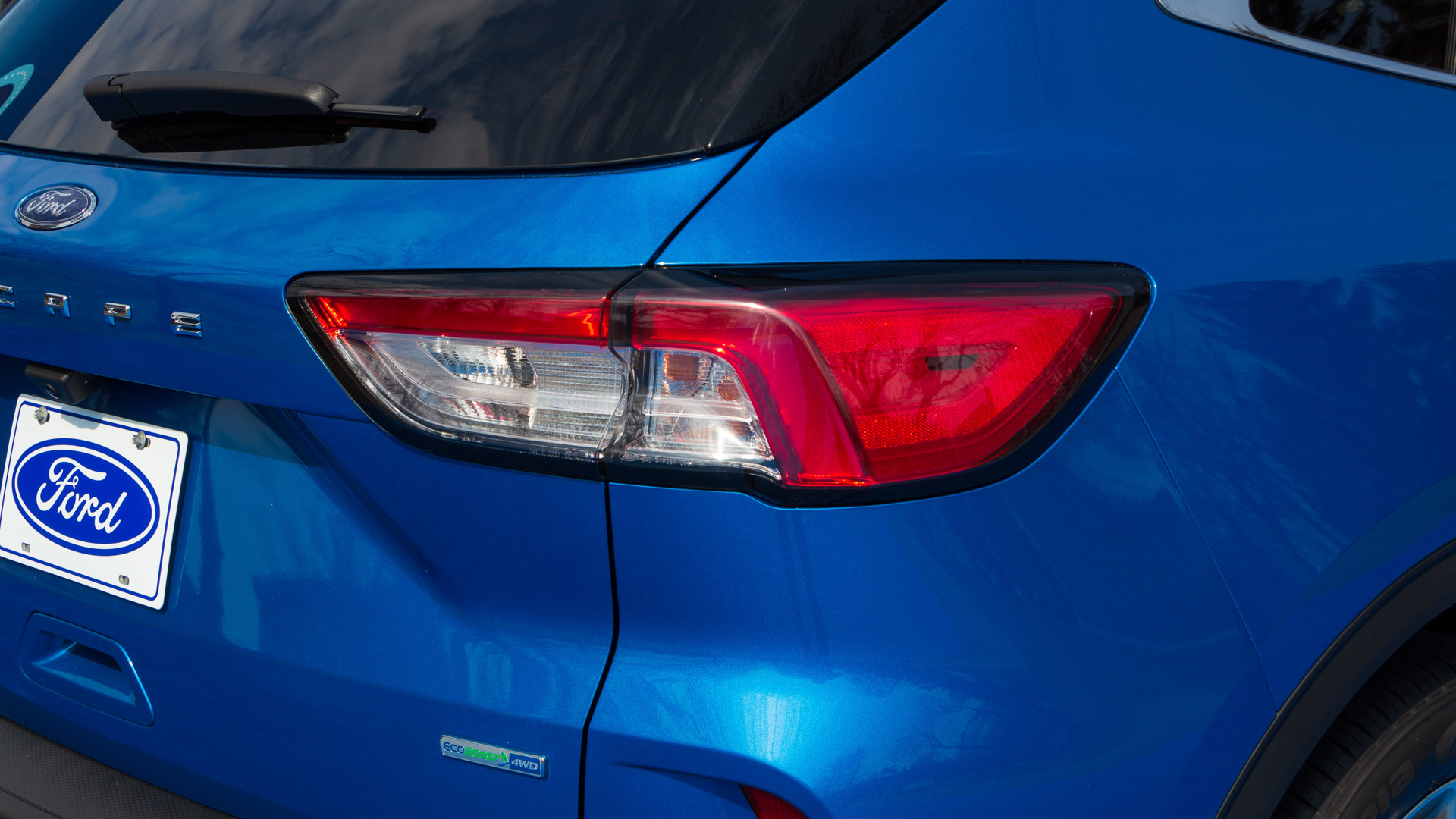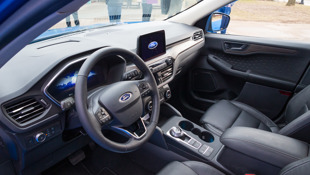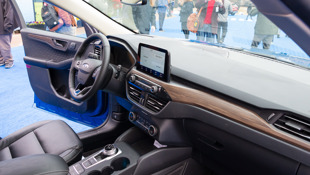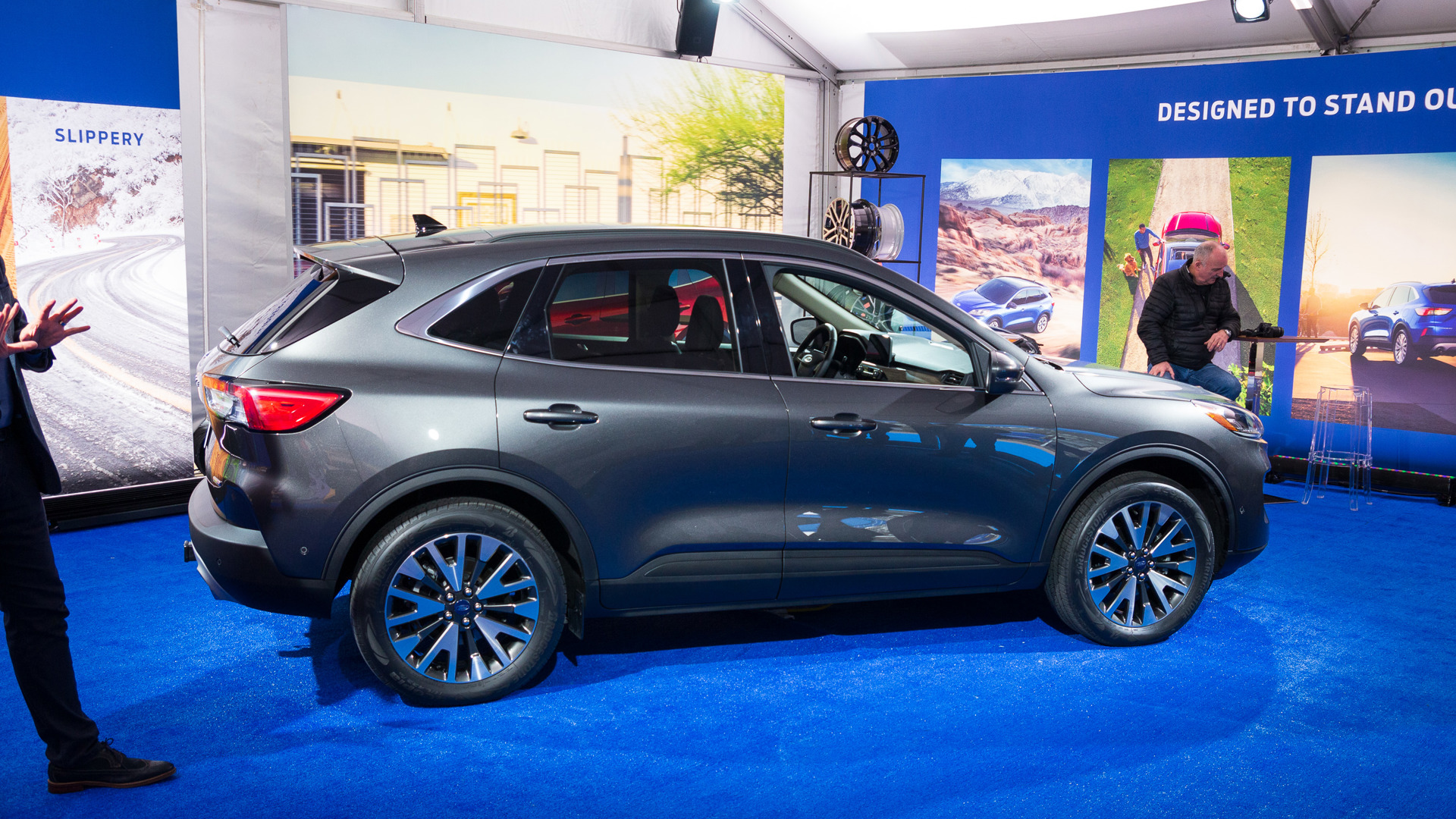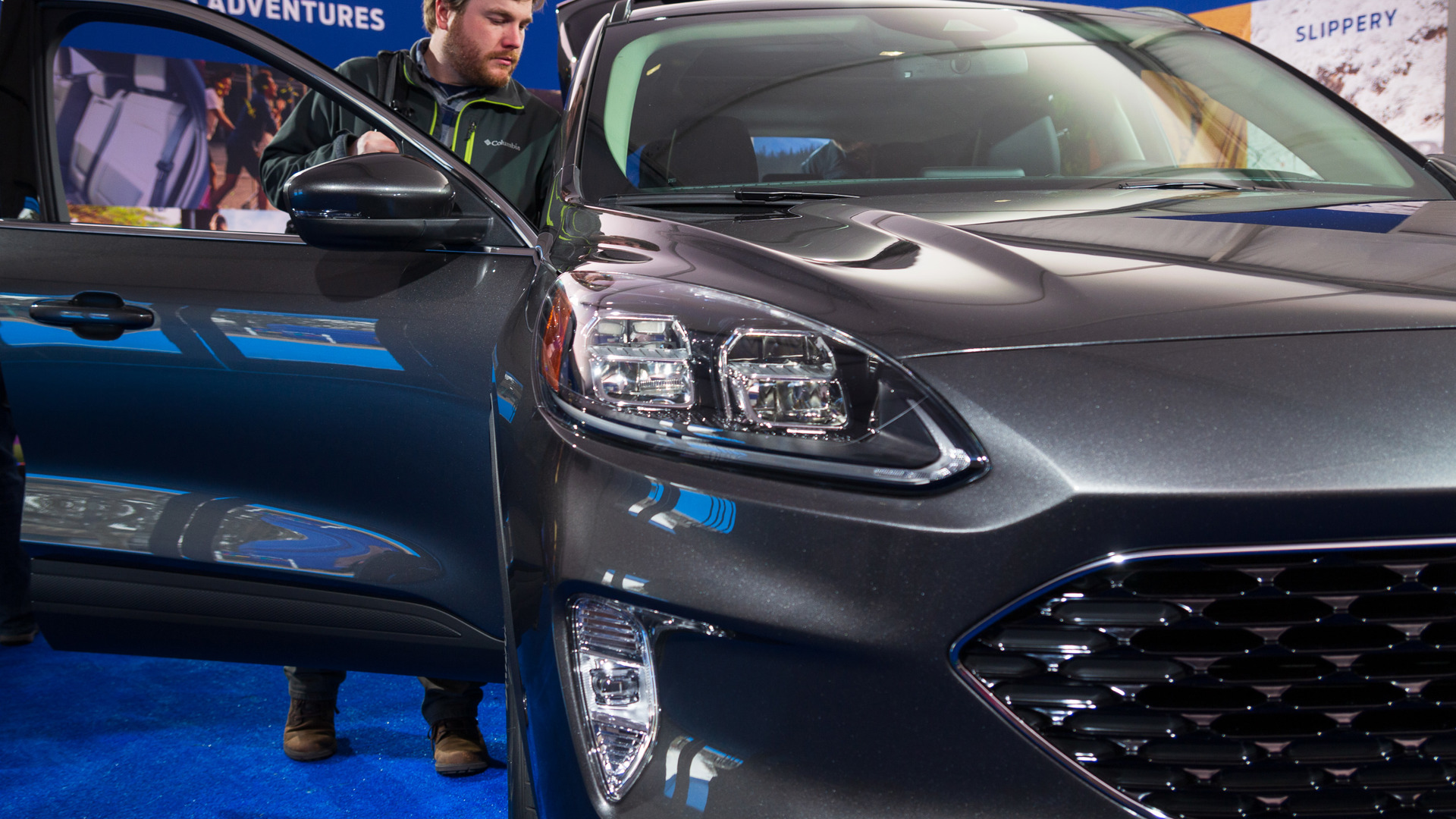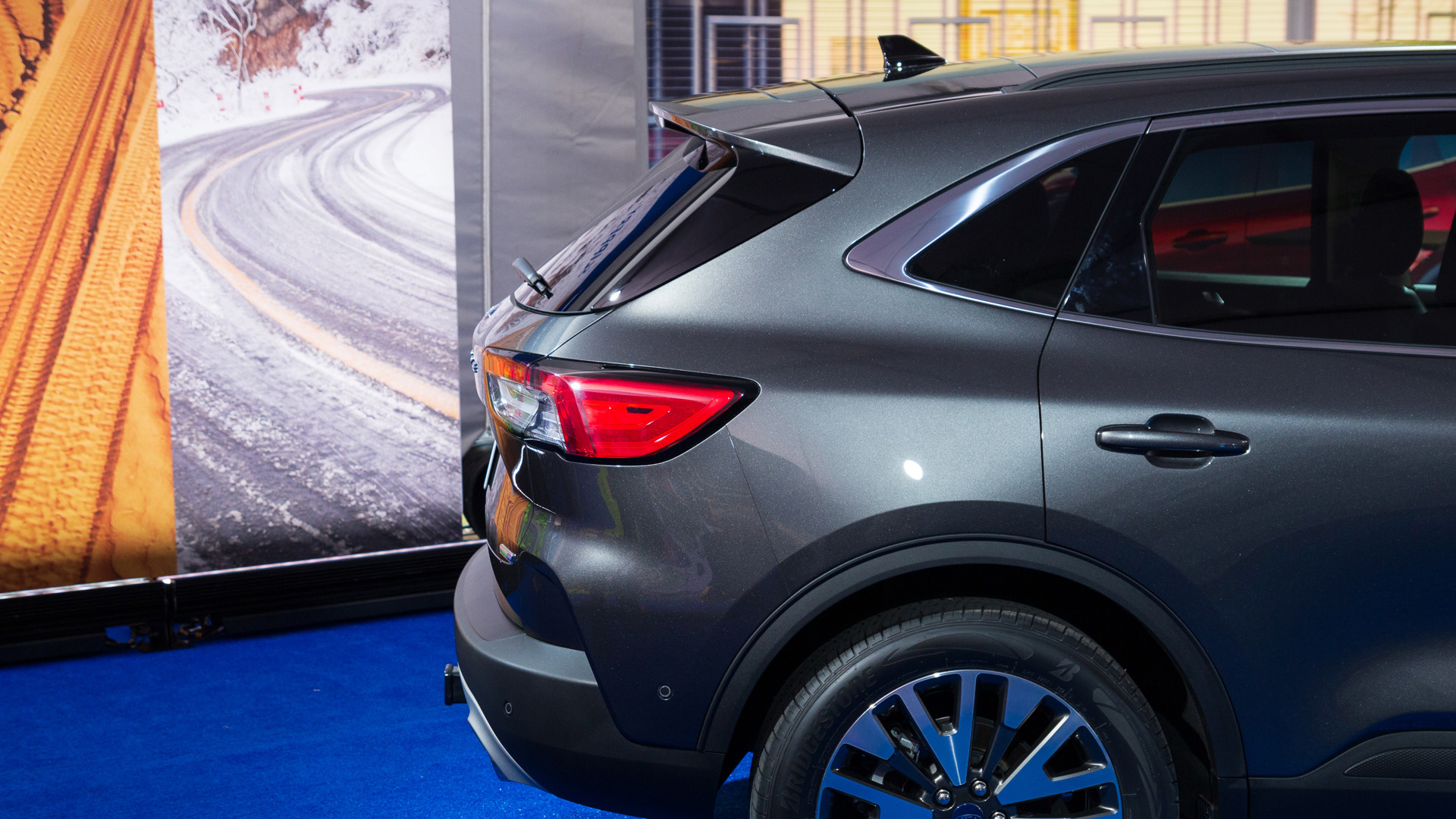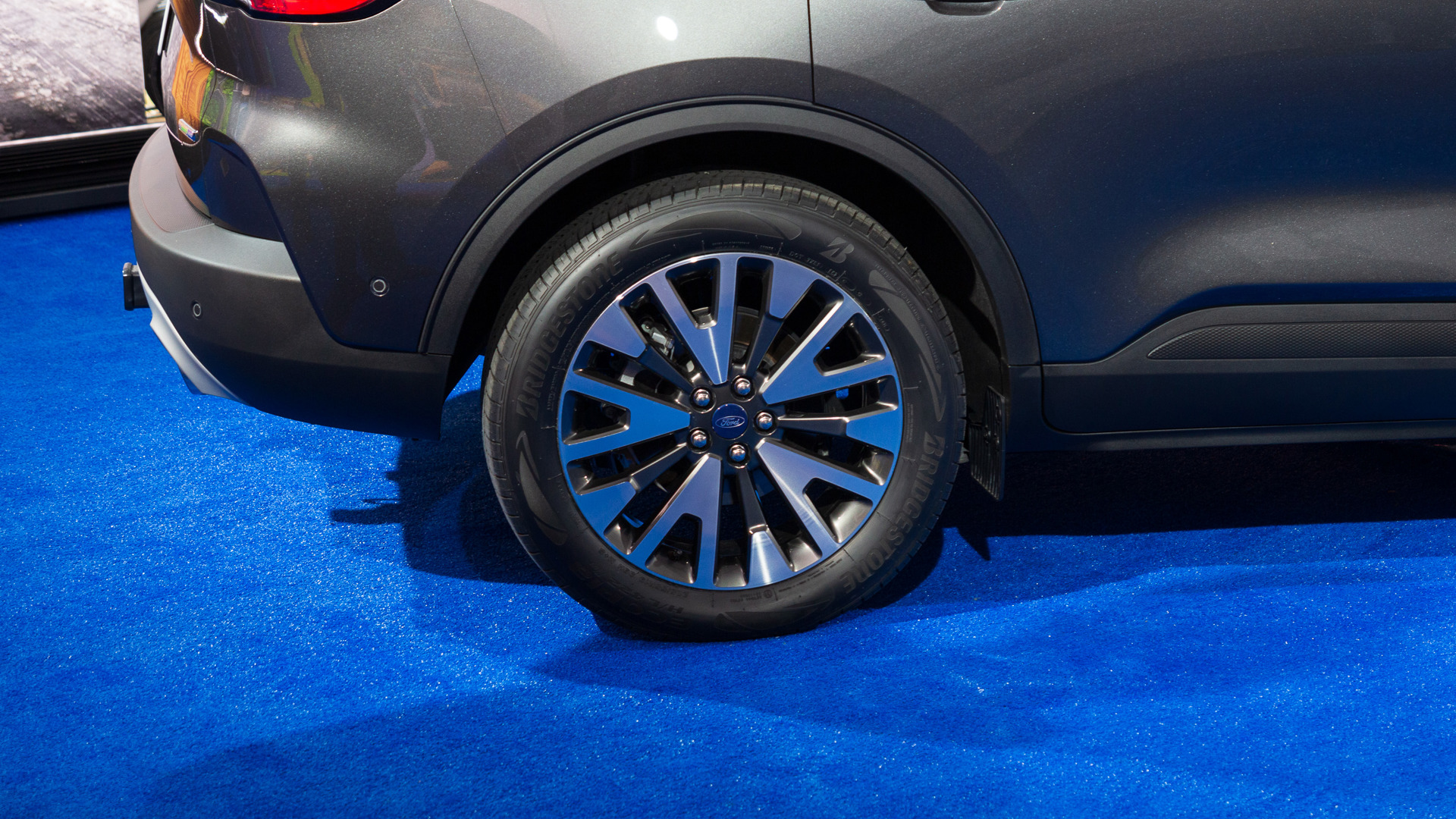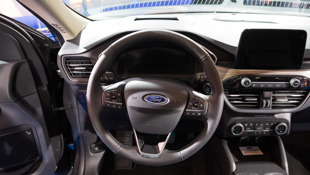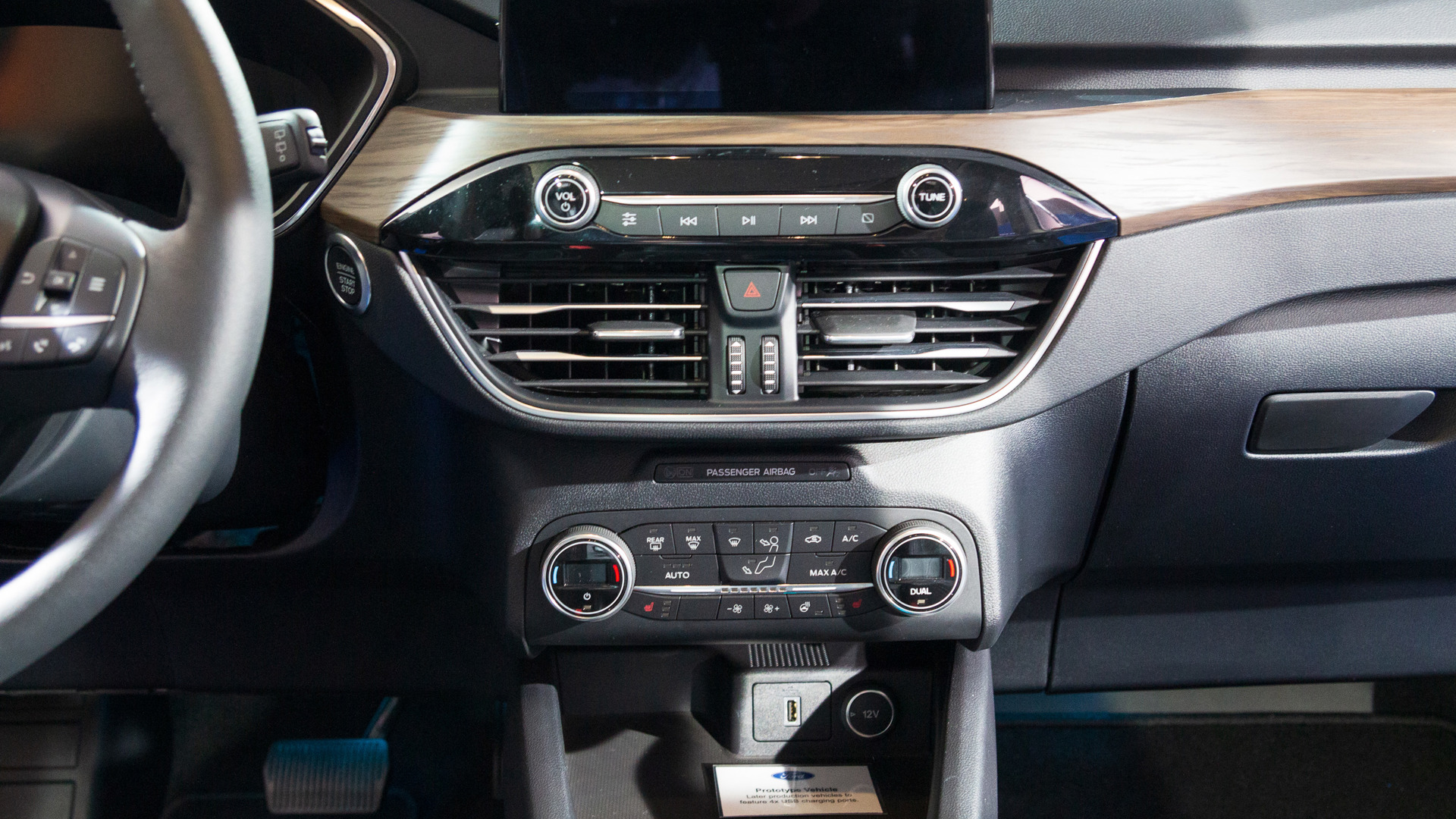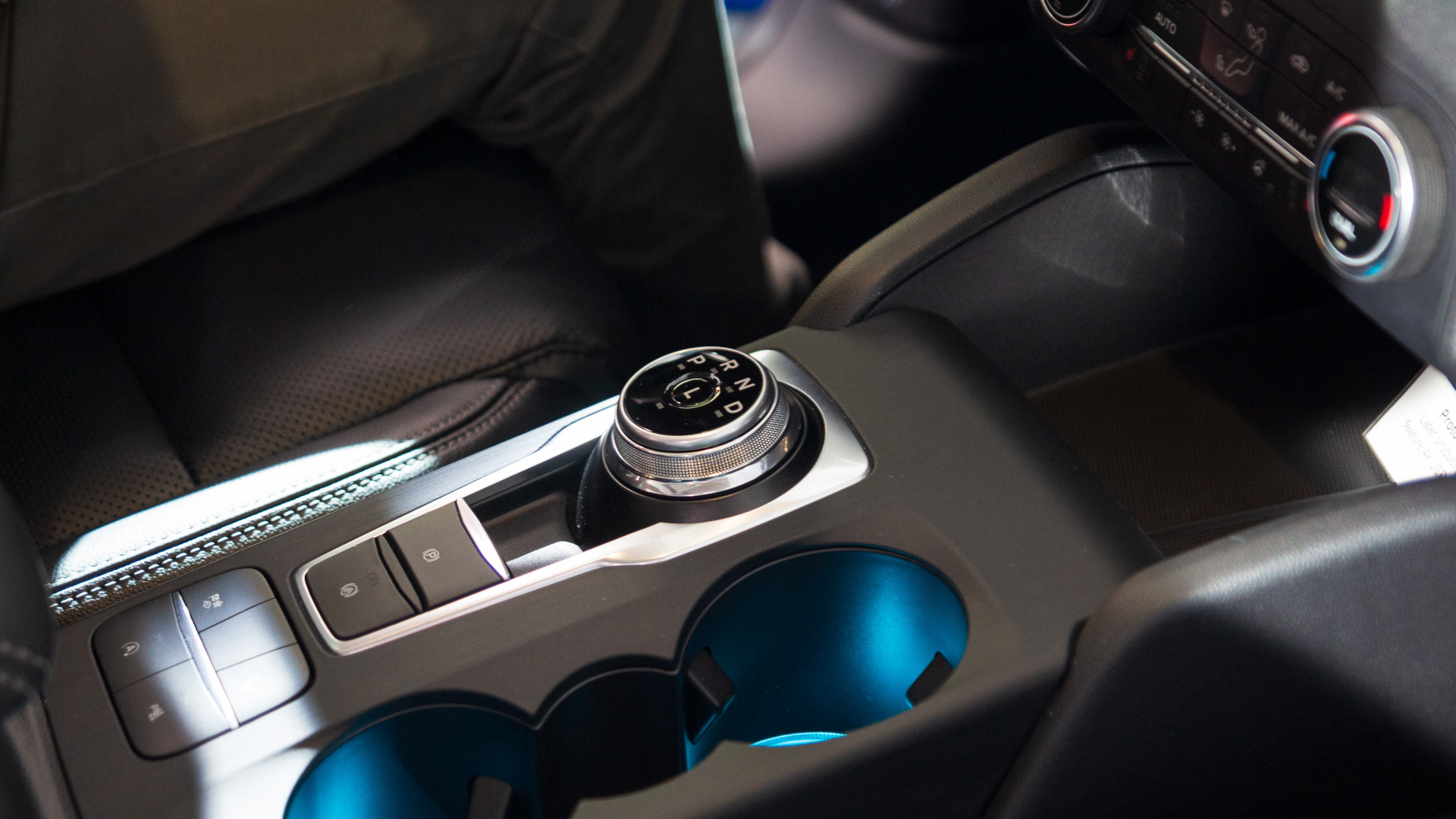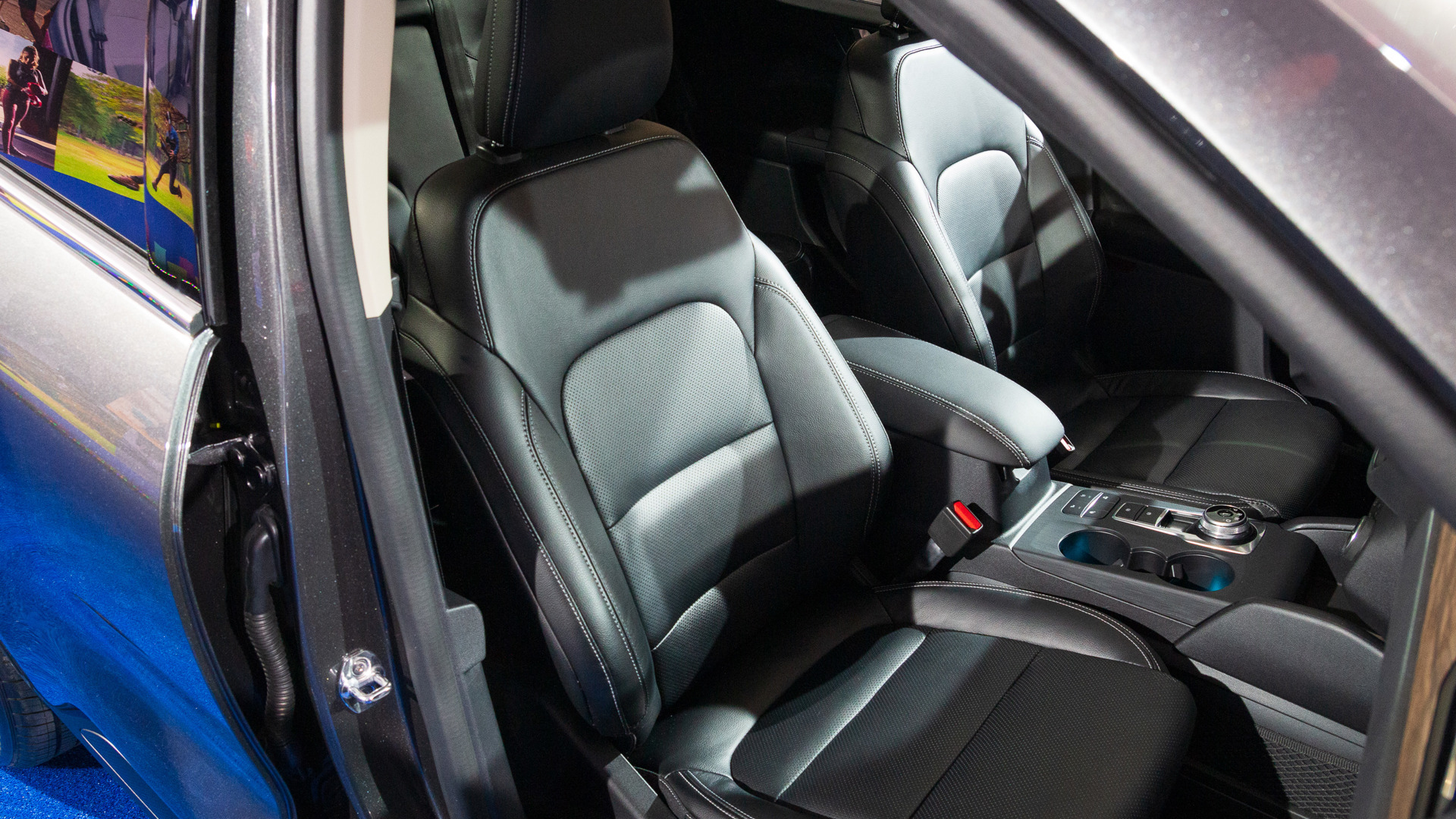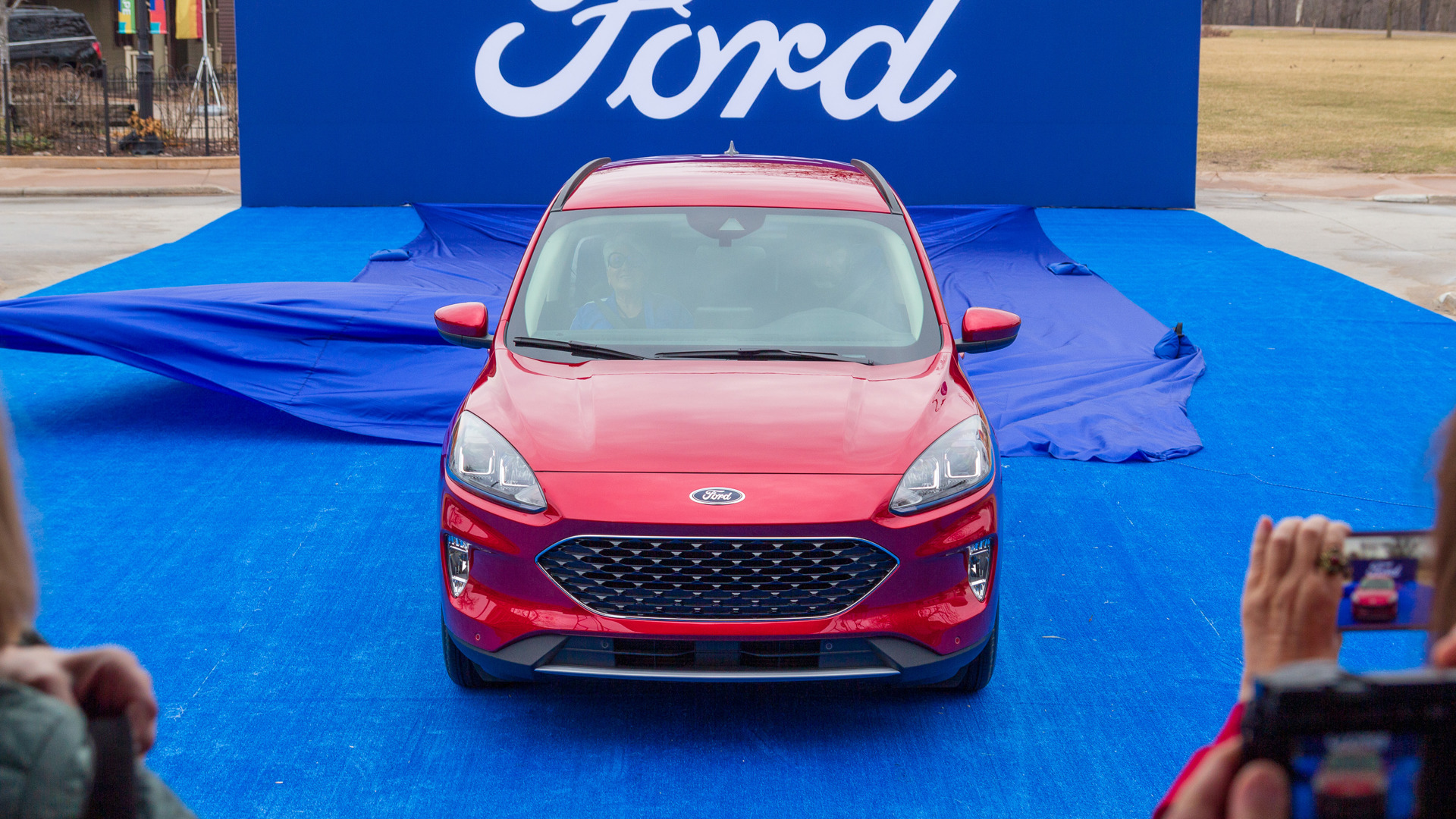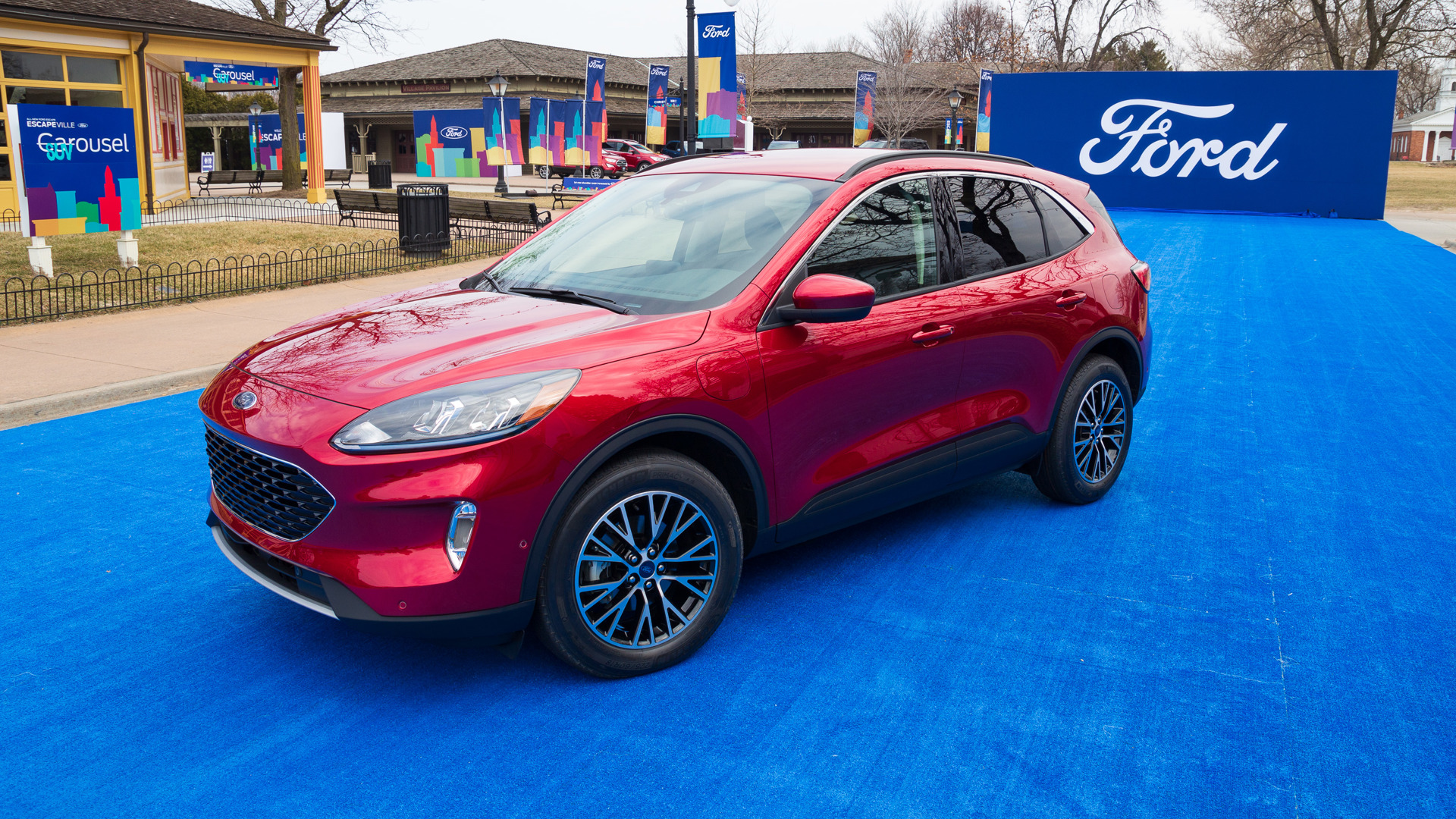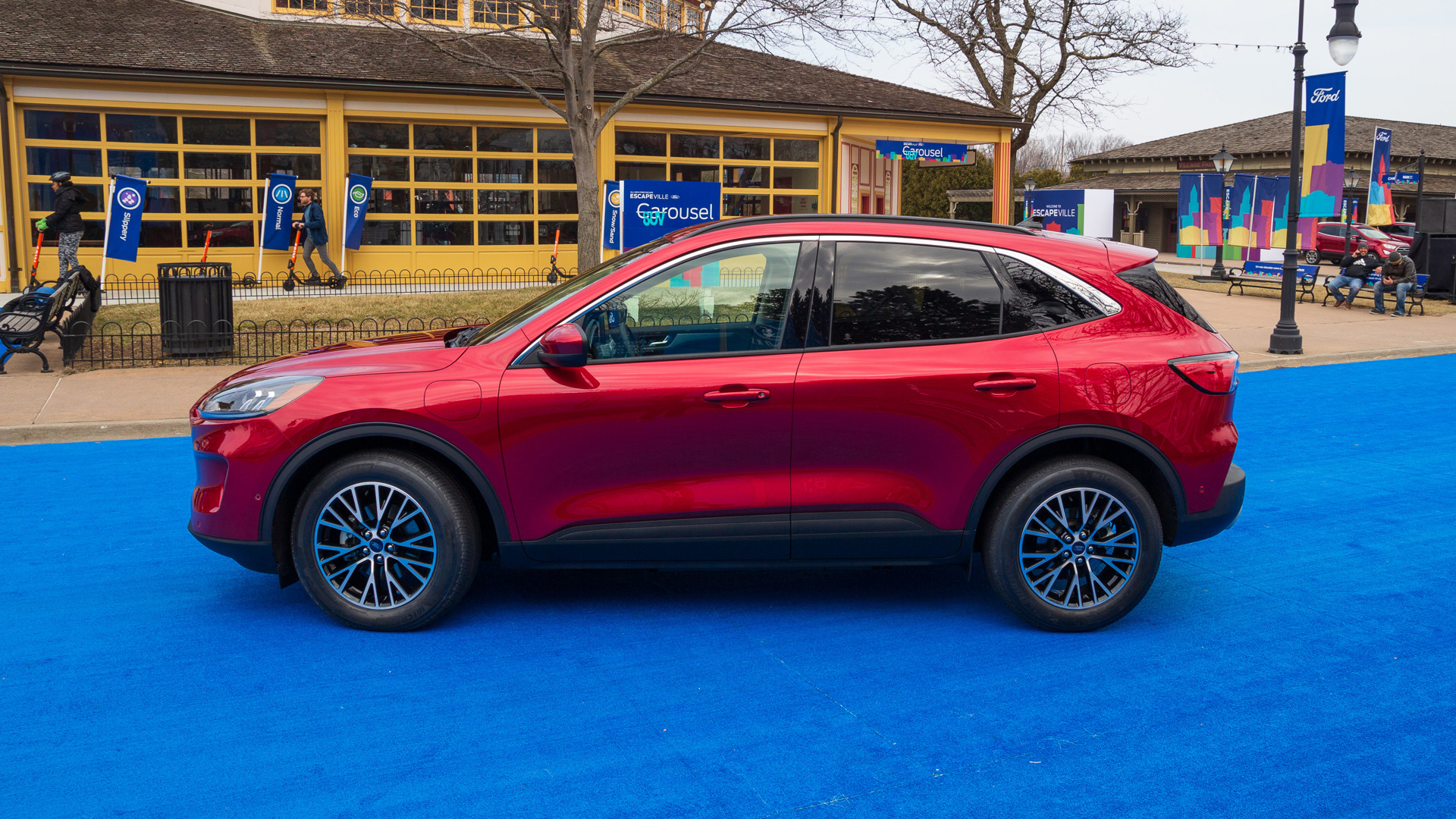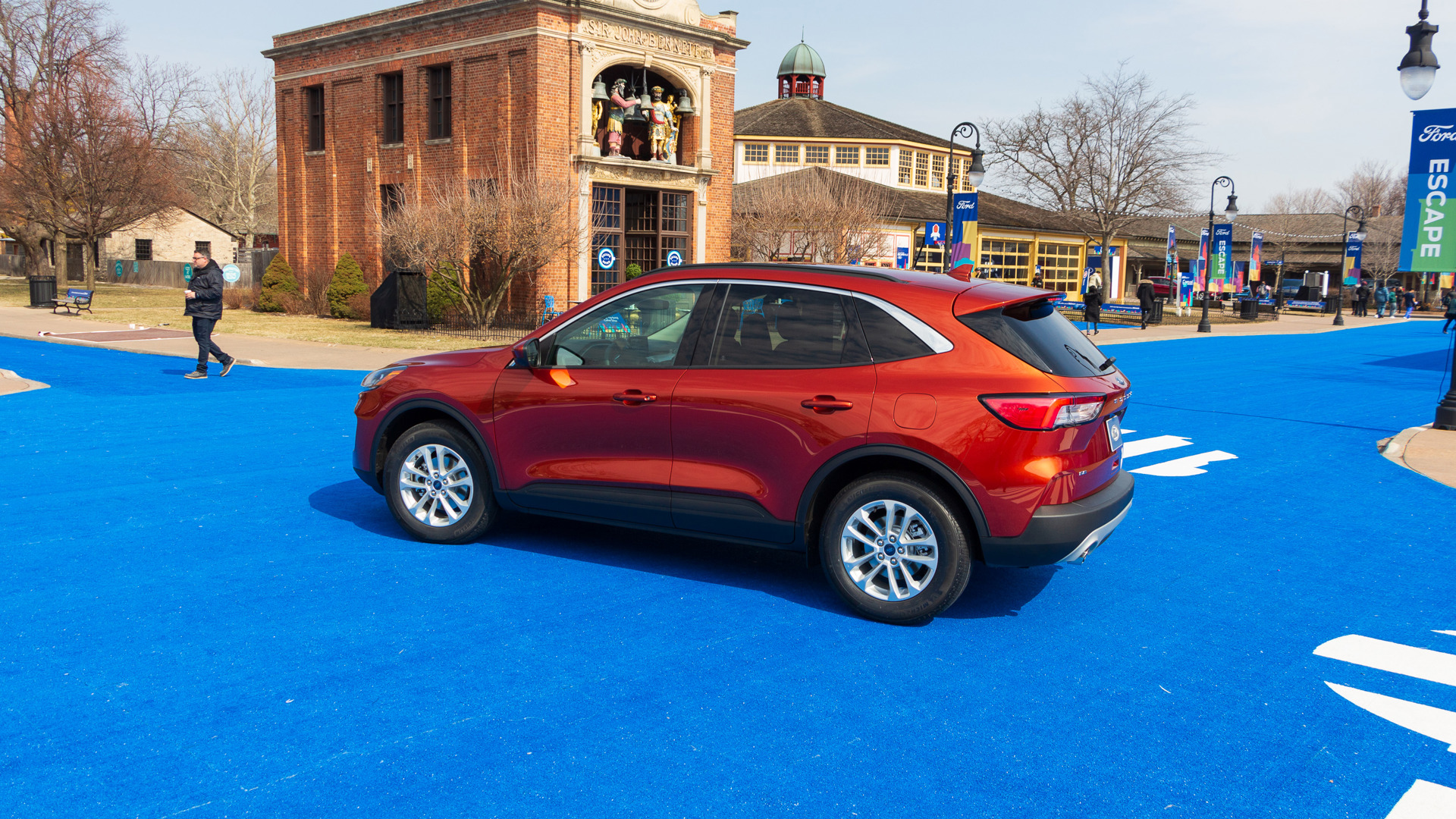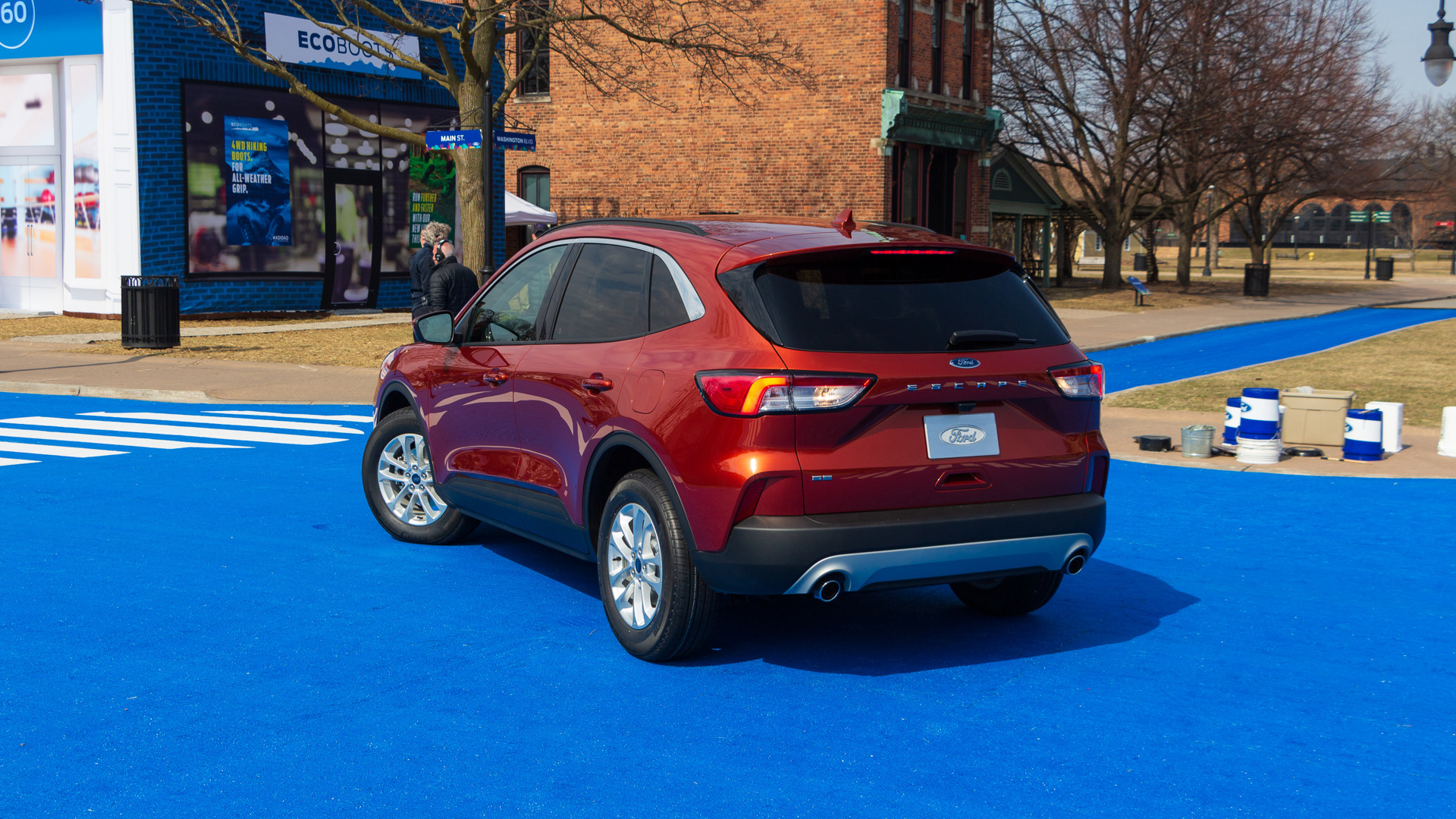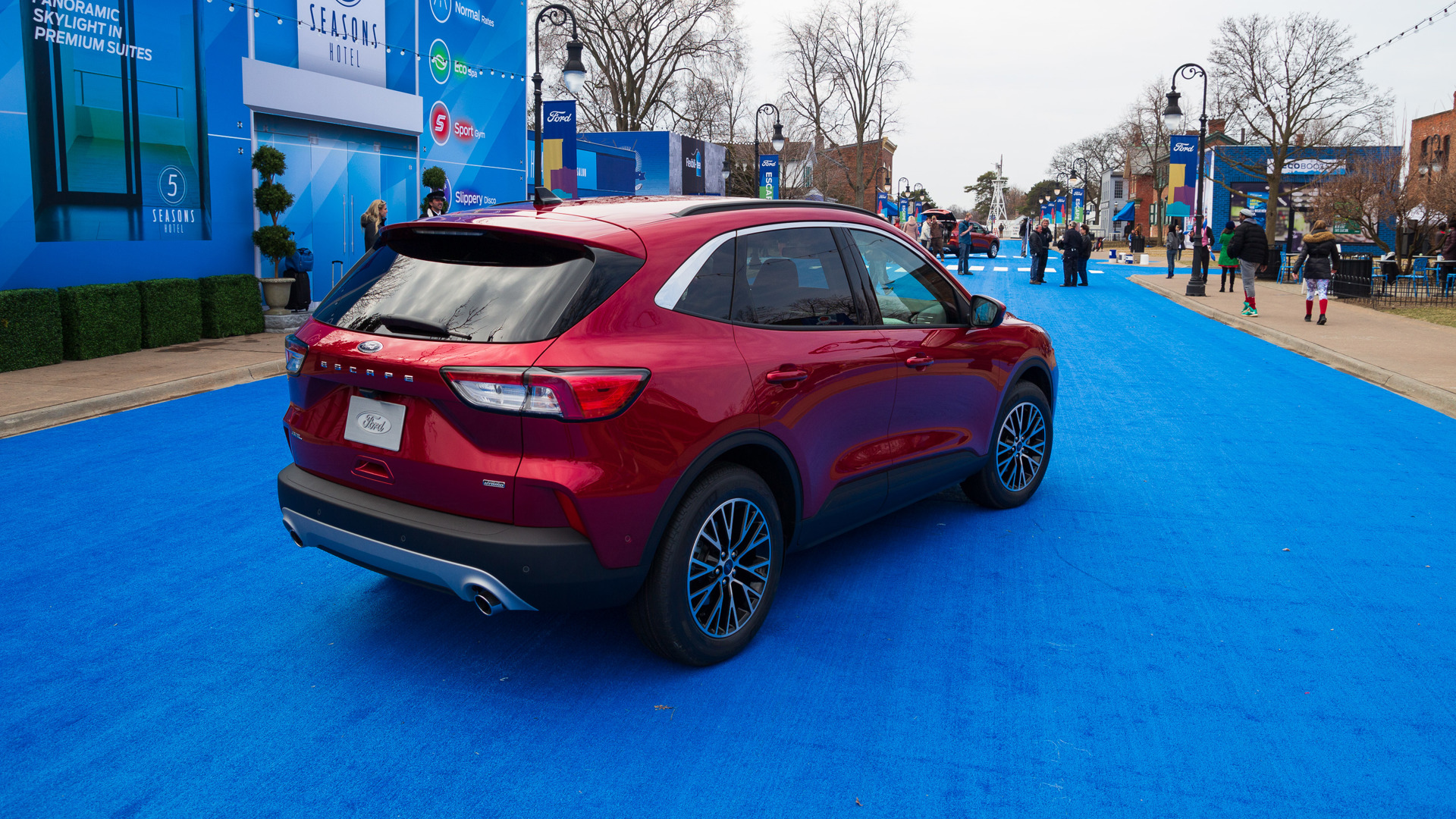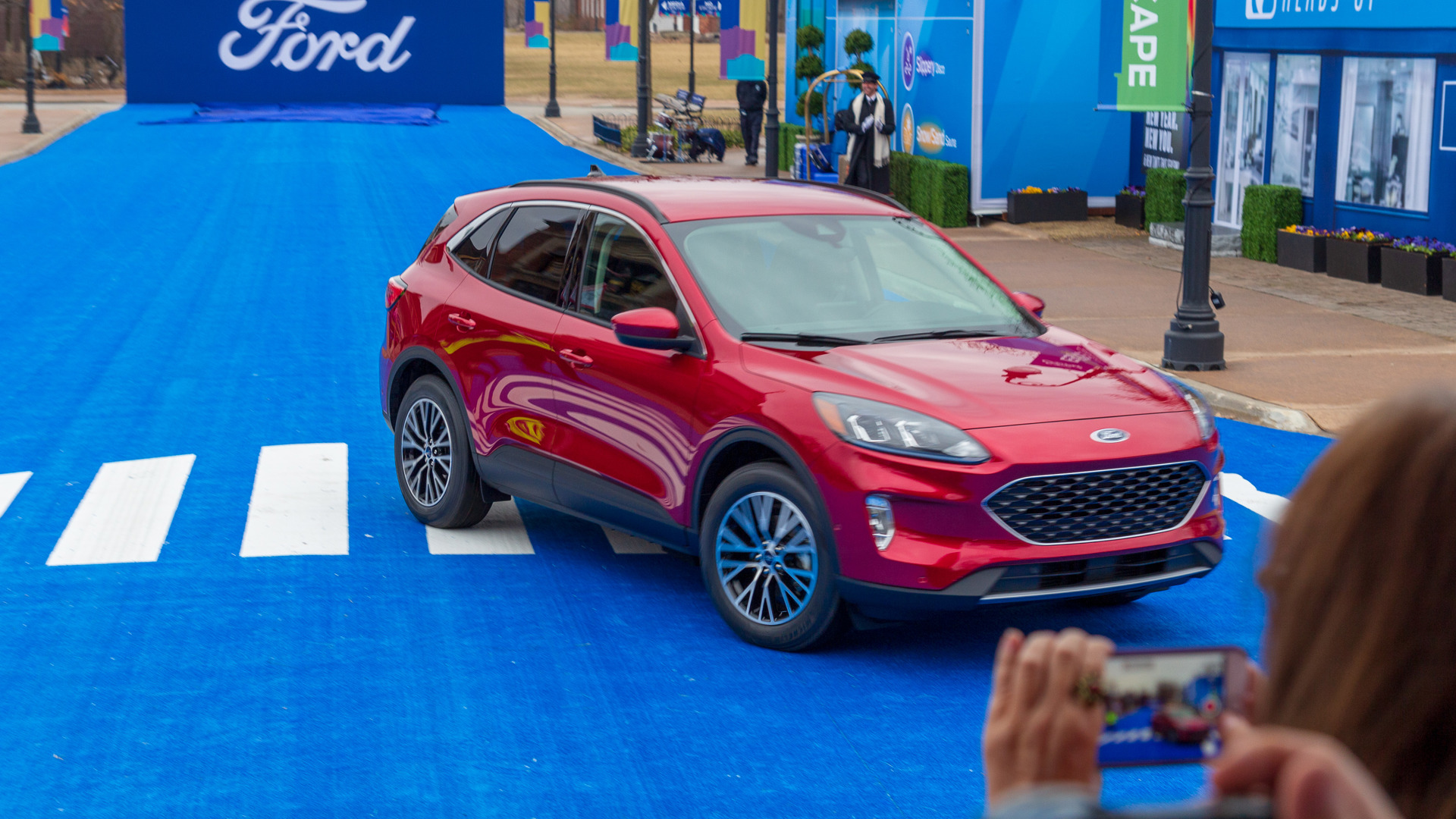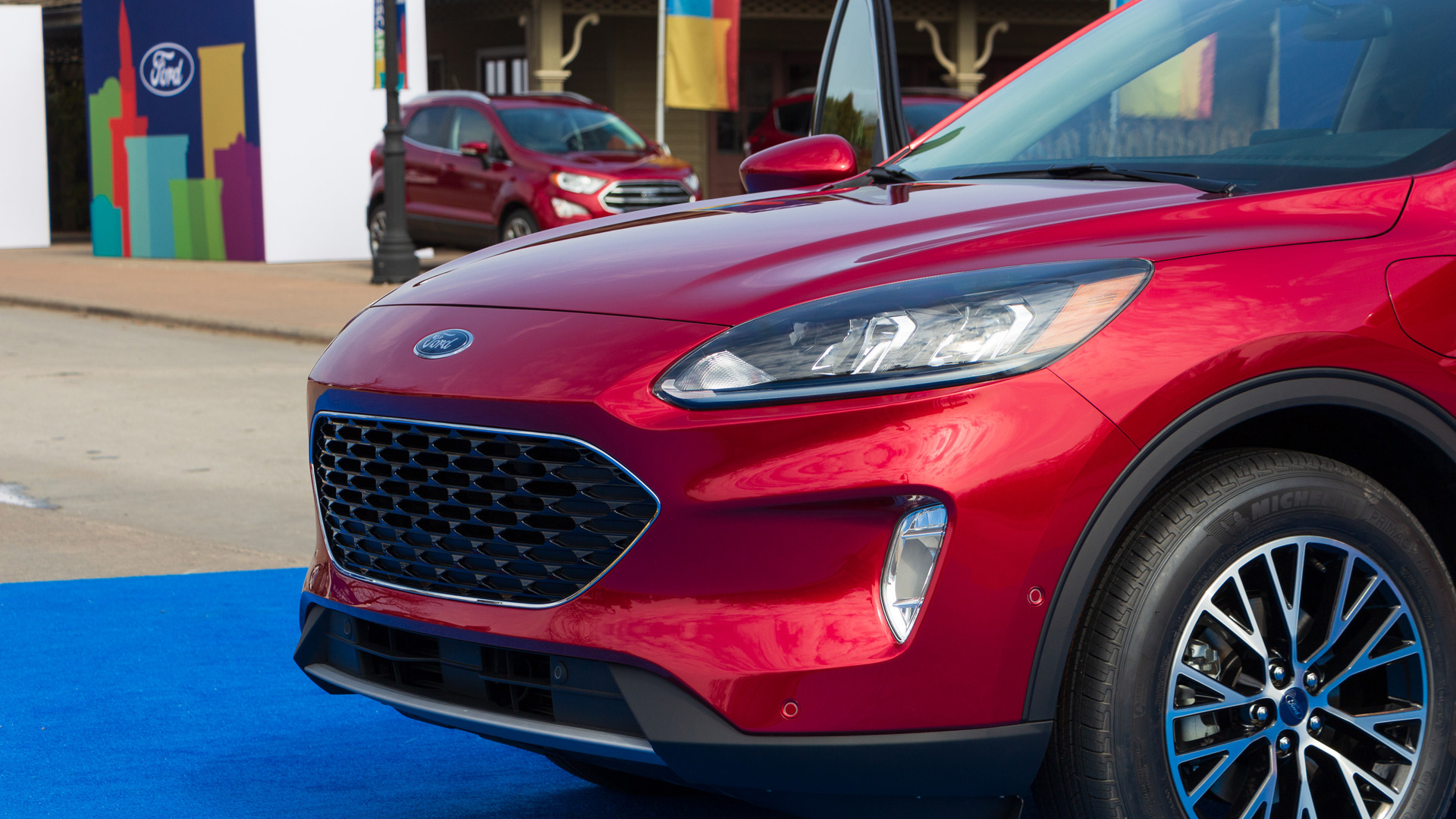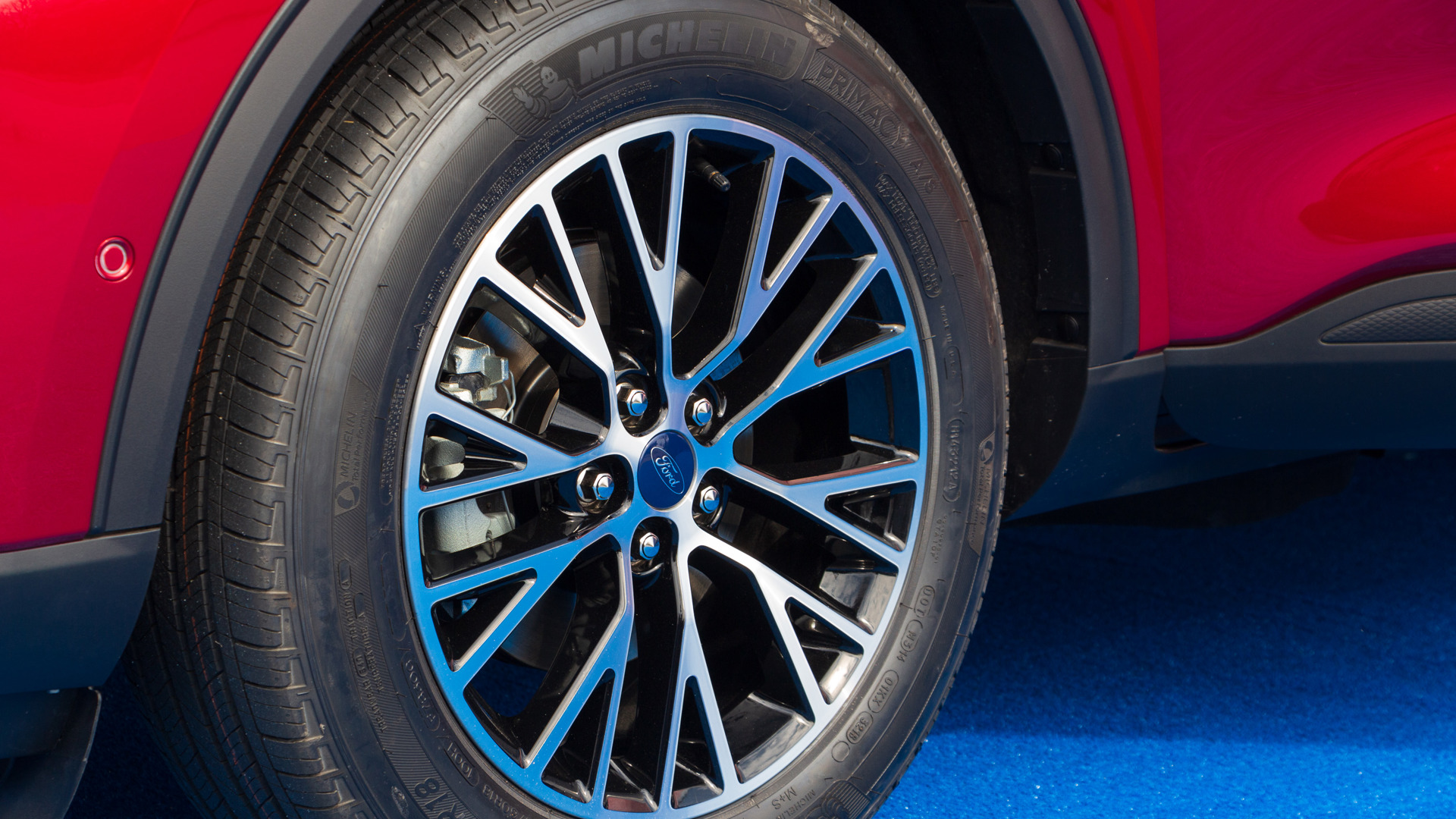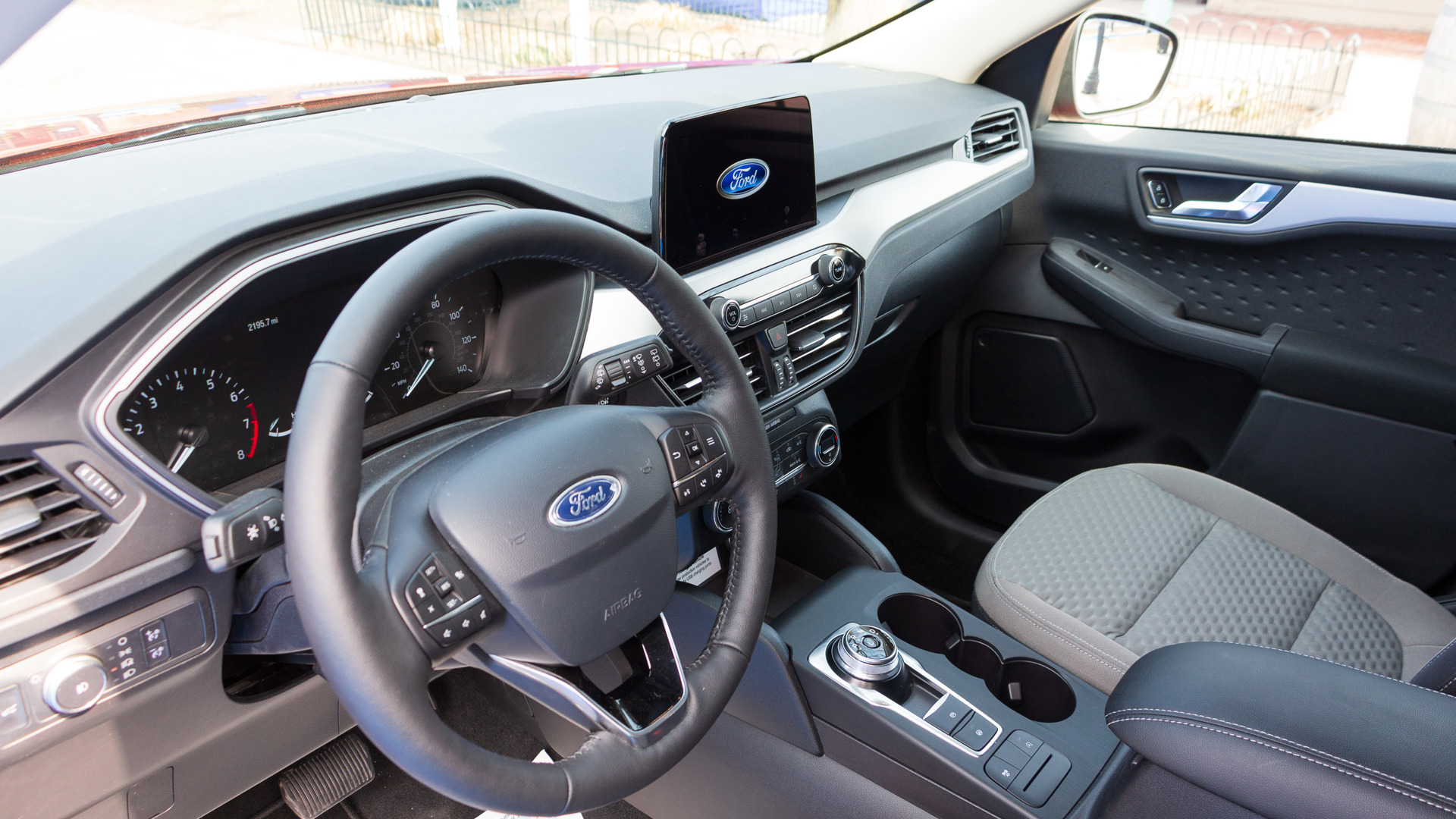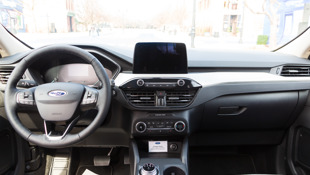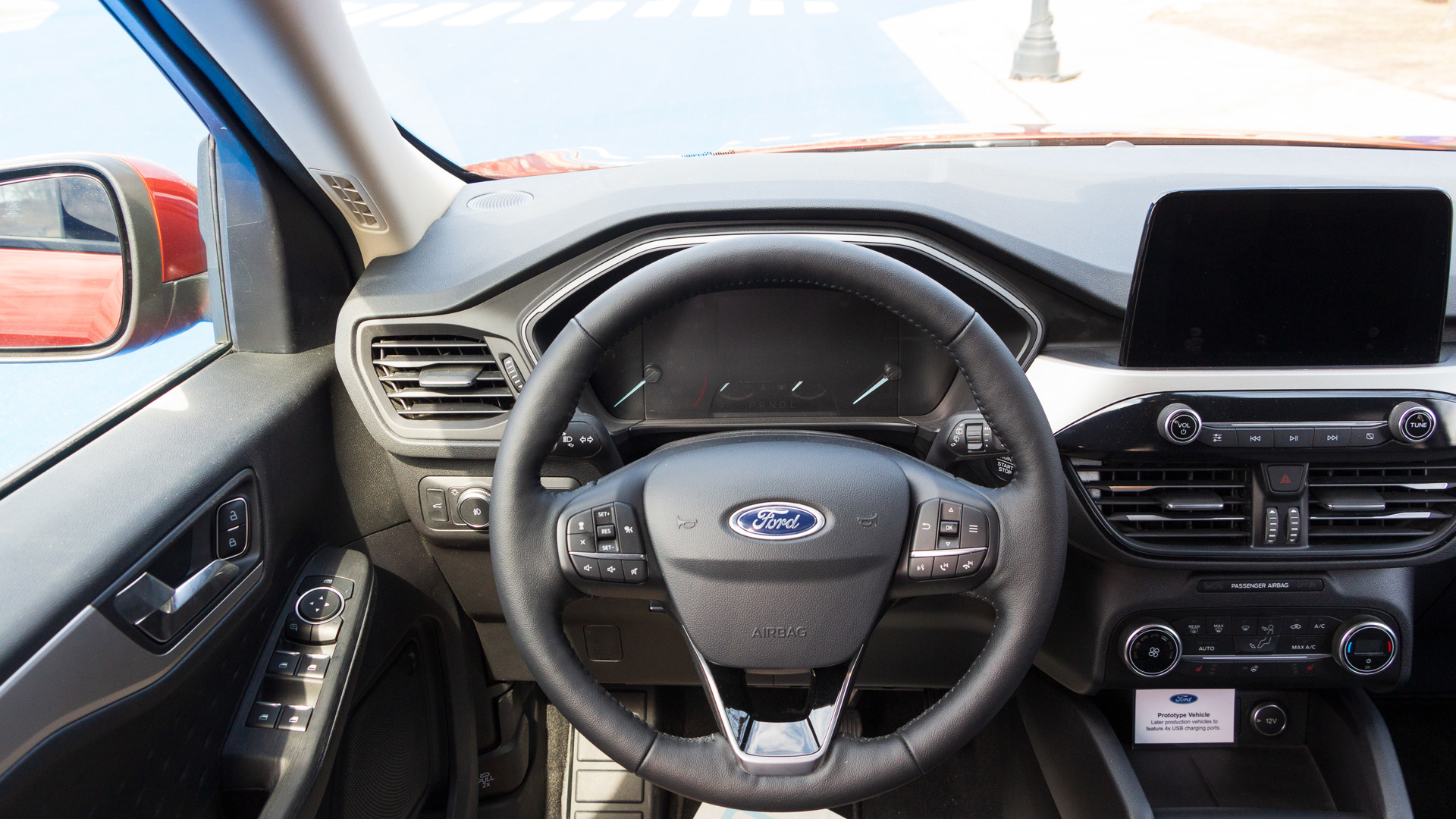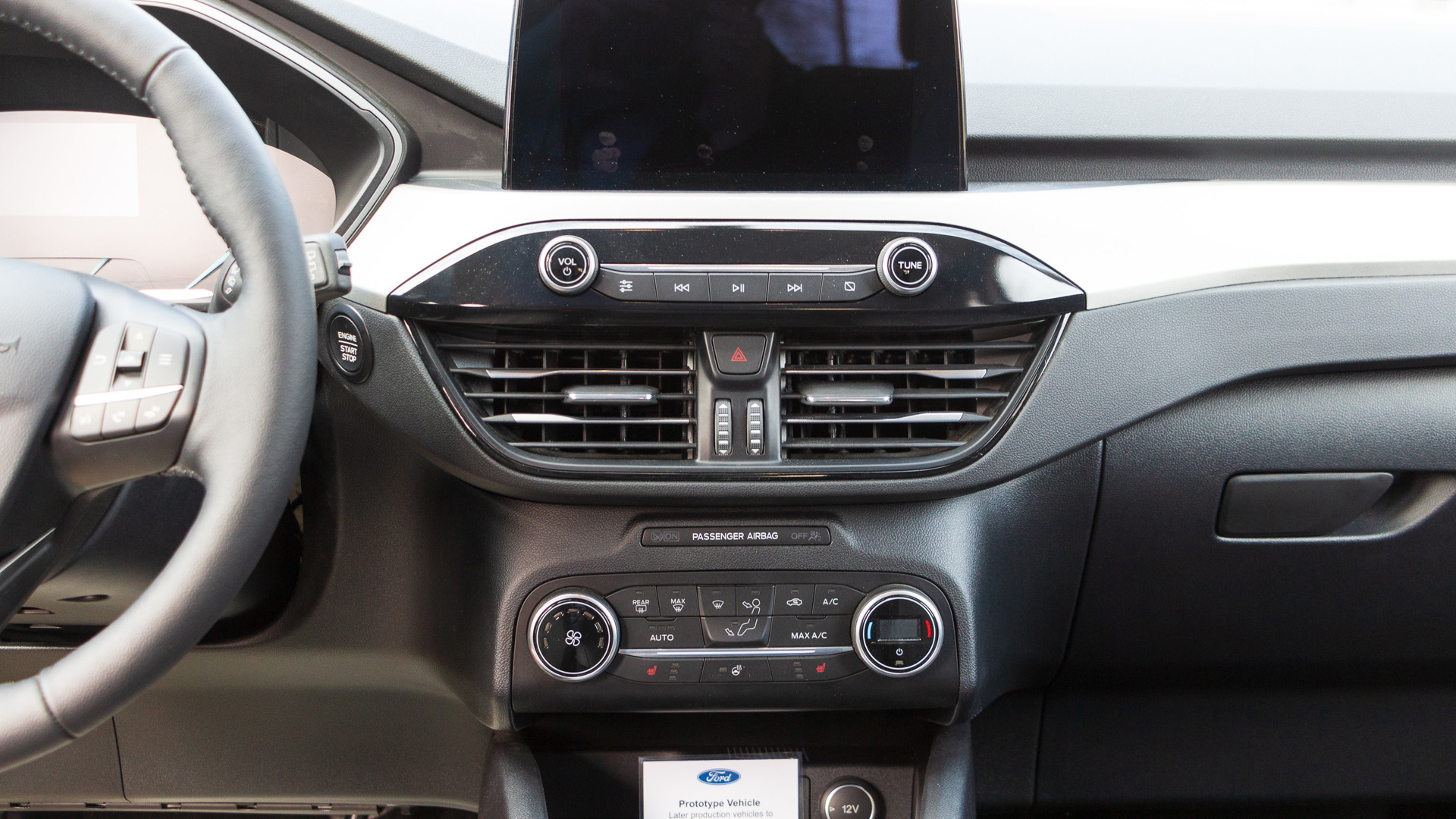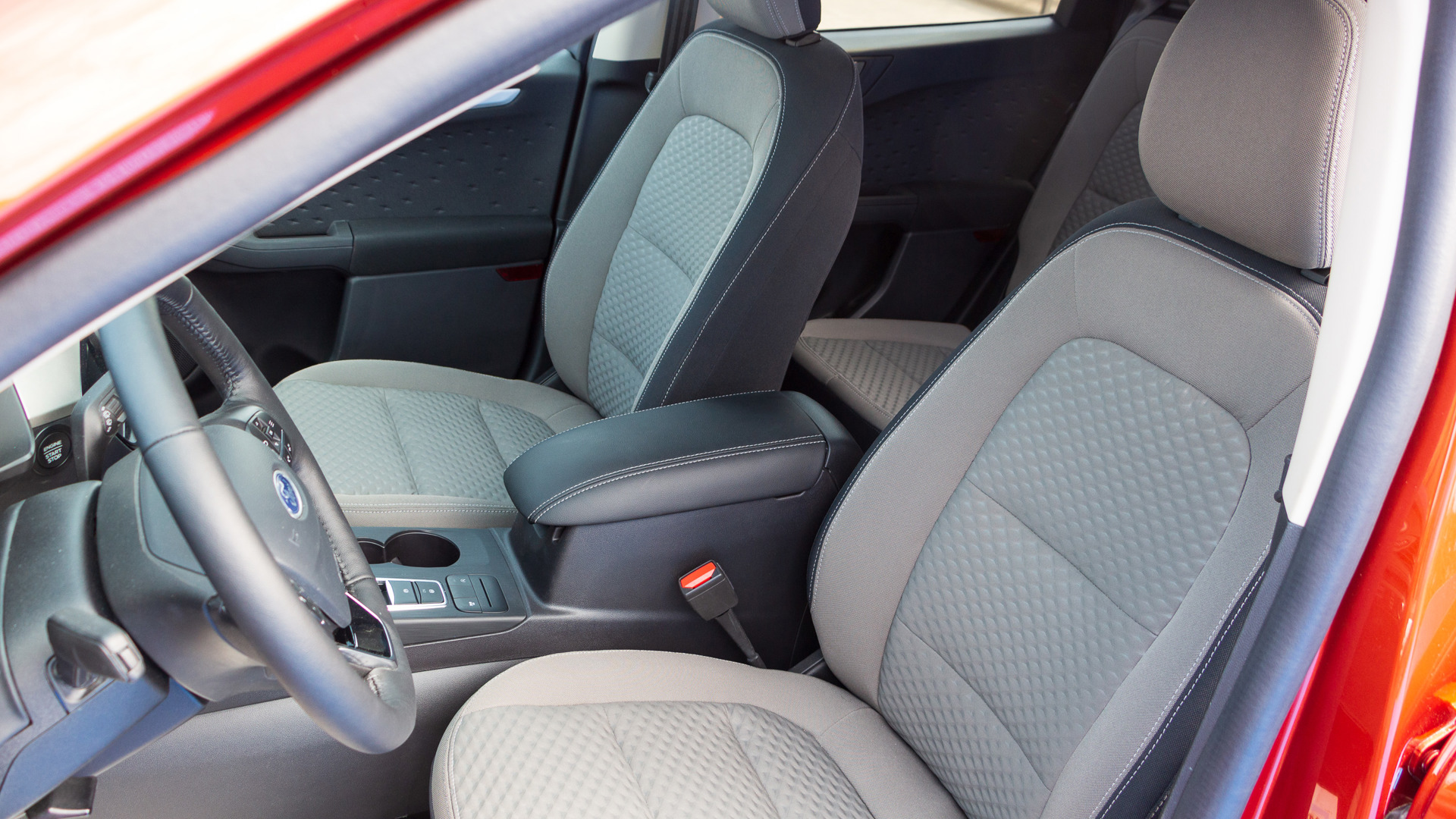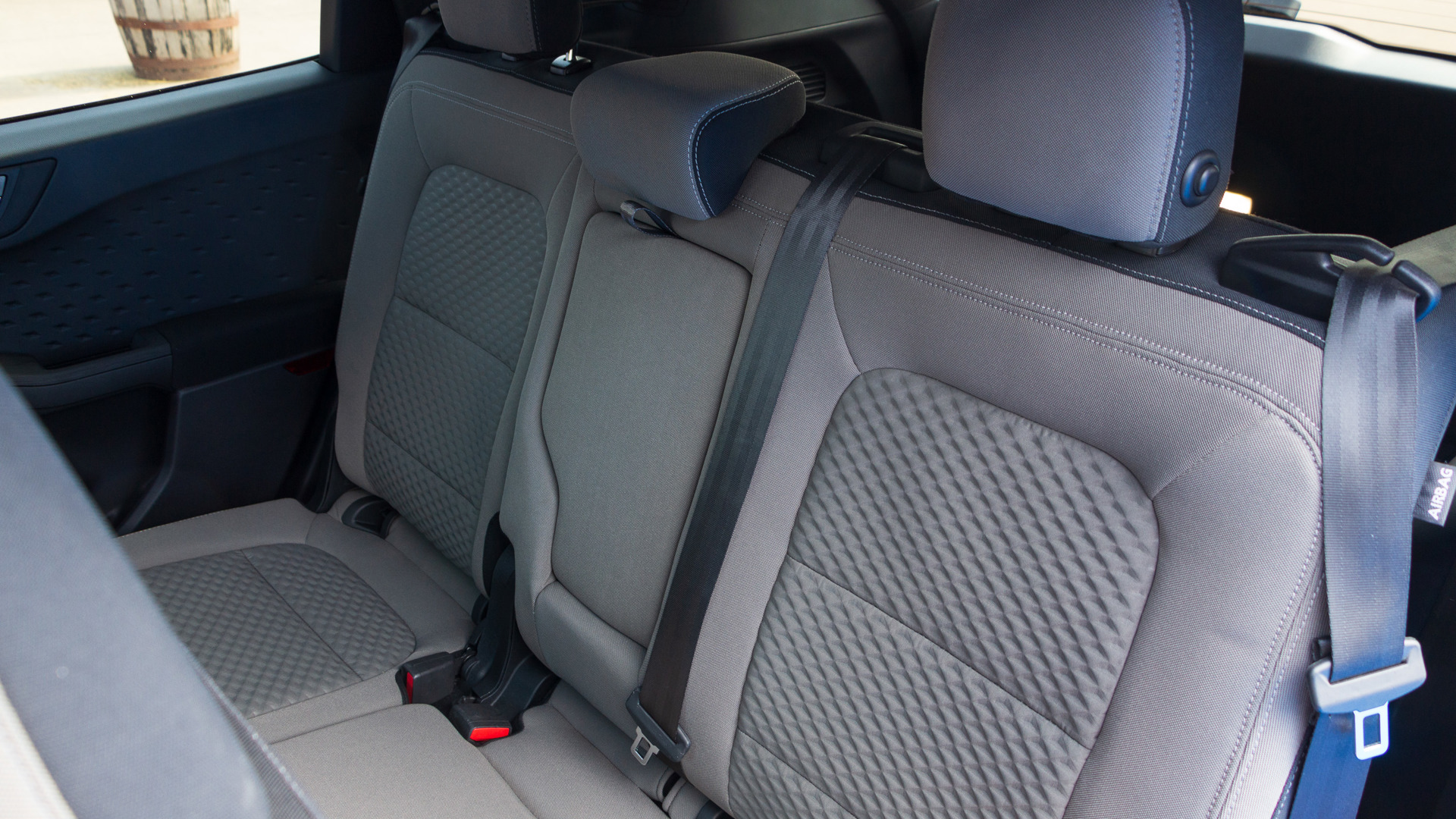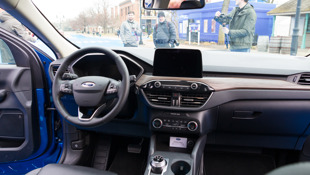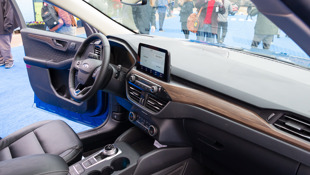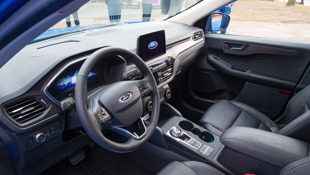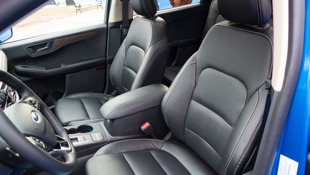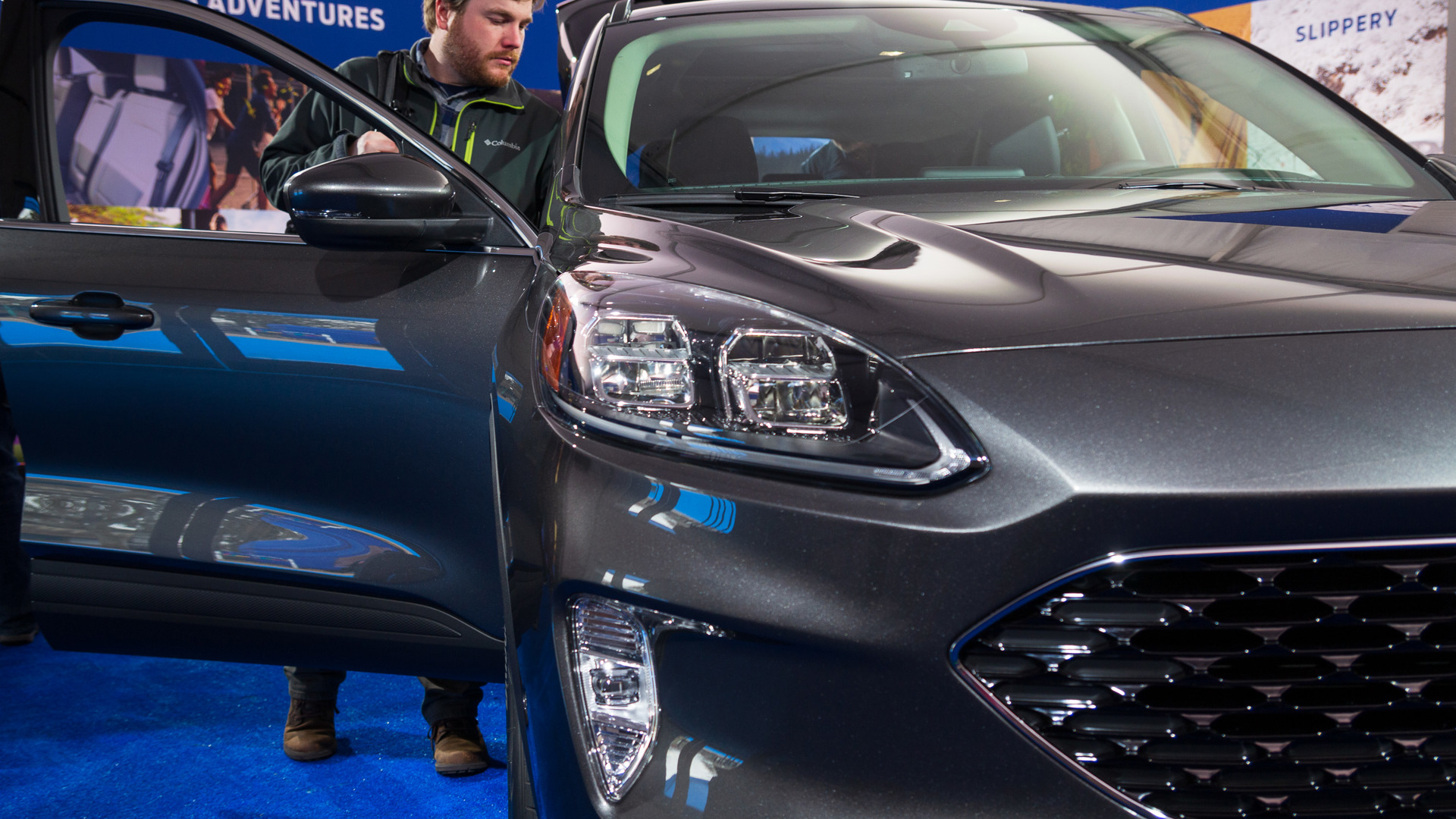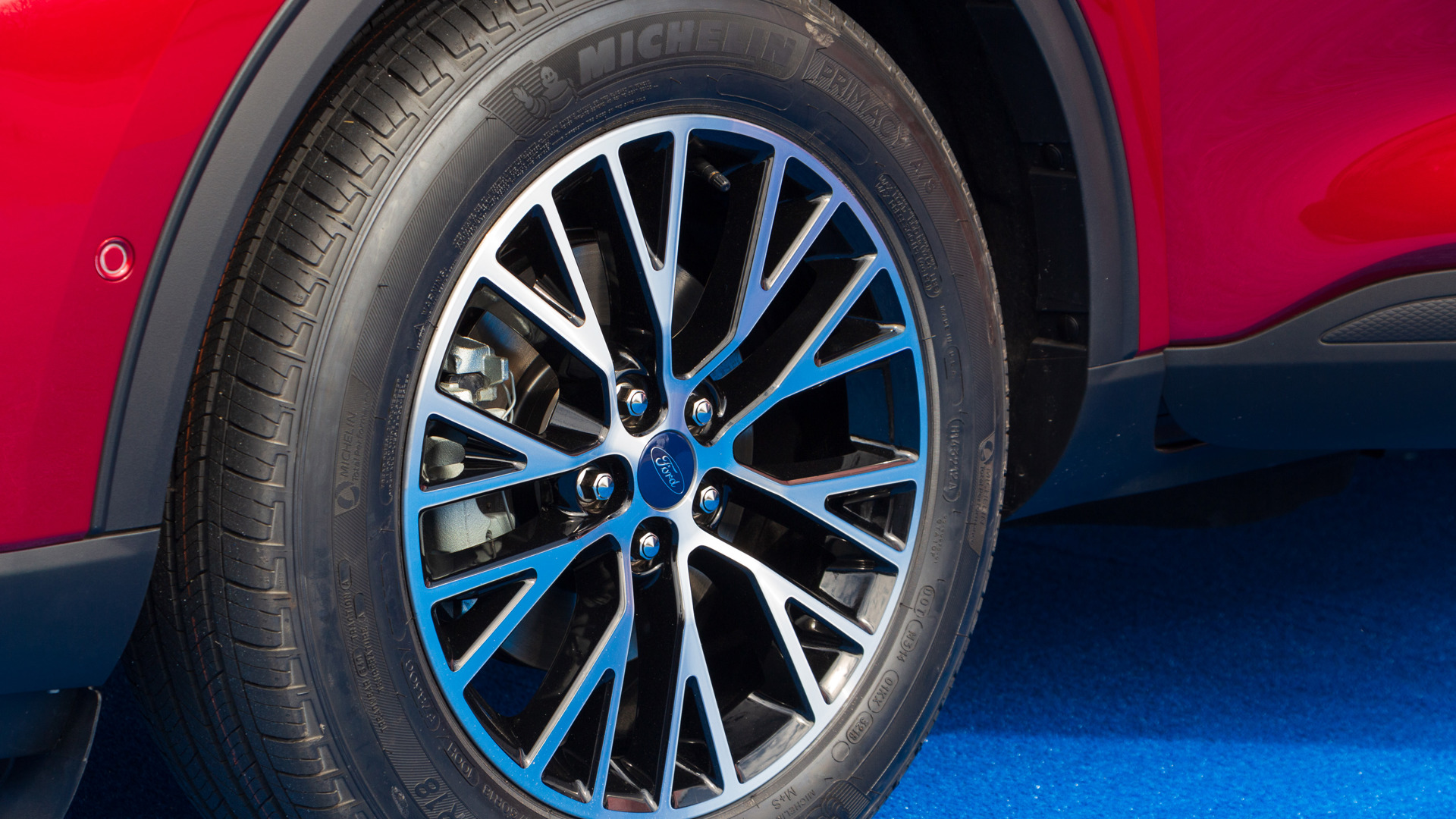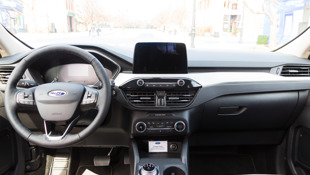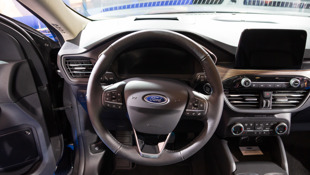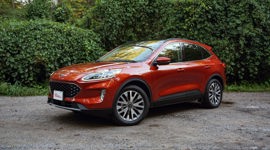The Escape is a small crossover – and a big deal at Ford. It’s the company’s second-best-selling model in North America, after the juggernaut nameplates that make up the F-Series pickup line. And while when the Escape first debuted back in 2000 there were only six crossovers in this segment, today there are 22. In just a couple of years, Ford says there will be 30. So, you know, no pressure to make sure that this all-new 2020 Ford Escape is competitive.
So how does Ford plan to keep it at the top of the heap? Sleek new styling, increased interior space, and the return of the hybrid (and addition of a PHEV).
It starts with an all-new platform. One that’s loaded with more high-strength steel and what Ford calls Smart Steel in the roof beams. That’s a polymer and steel composite layer sandwiched between two sheets of conventional mild steel. The company says that the new Escape sheds more than 90 kg of curb weight compared with the outgoing Escape.
Despite that lower weight, the new model grows 20 mm in wheelbase and track, which means more room inside – 150 L more, giving it a total of 2,945 L of passenger space. Maximum cargo space is down slightly, but space with the rear seats up grows by 3.5 cubic feet, roughly 99 L. That’s thanks largely to a rear seat that can slide fore and aft by up to 150 mm, letting you trade legroom for cargo space depending on your needs. That’s enough cargo space for four golf bags or a large dog crate. It offers up room for five large adults (we tried) though if you’re planning on making that a habit you’ll probably want to skip the panoramic glass roof. Maximum rear-seat legroom is 1,034 mm. That’s more than a full-size Chevrolet Suburban, as Ford pointed out about six times during the presentation. It’s also the best in its own class.
Infotainment comes through an 8.0-inch screen on SE and above models. It uses Ford’s Sync3 system with Apple CarPlay, Android Auto, Alexa, and Waze. The built-in Wi-Fi hotspot works up to 15 m outside the vehicle. There’s also a new 12.3-inch digital instrument cluster available with configurable graphics and drive mode animations. Titanium models get a 6.0-inch head-up display to help keep the driver’s eyes on the road.
The new Escape’s styling is a cheerful look. It drops most of the rugged pretences of the previous models – that role is set to be filled by another vehicle later – in favour of what Ford calls sportier styling. We think it looks a bit like the Tesla Model 3 with a grille in the nose and a Porsche Macan through the doors, but those are both compliments. Overall, it’s a handsome little CUV.
To show off the new Escape, Ford has transformed Greenfield Village, the living history museum of The Henry Ford, into Escapeville. The main street has been transformed into displays of the new vehicle’s features, and there’s something fascinating about hearing about the new Escape’s lower drag while standing in the shop where the Wright Brothers designed their first powered aircraft. Or discussing the Escape’s new driver assistance features in a recreation of the lab where Edison invented things like the phonograph – standing, surrounded by steam-powered, belt-driven machinery, with a vehicle that can park itself with one button press.
On top of the available Active Park Assist 2.0, the Escape will come standard with Ford Co-Pilot360. That means blind spot alerts with cross-traffic alert, lane-departure warning, lane-keeping steering, automatic high-beams, pre-collision with automatic braking and pedestrian detection. Other optional add-ons include adaptive cruise, lane centering, and post-collision braking – as well as a new one: evasive steering assist. If it detects that a collision is imminent with a vehicle or object, the system will attempt to steer around it. If you try to steer around it yourself, the system will help you do it. It will also cancel the automatic braking if you try and swerve, so that you have more grip for steering and so that you’re not just sitting stopped in the middle of a live lane.
For 2020, the Escape will offer a pair of gas engines, both turbocharged, with the smaller one a three-cylinder and the larger a four. The base engine is a 1.5L version making 180 hp and 177 lb-ft of torque. If you put 93-octane fuel in it, that is. Available on SEL and Titanium is a 2.0L engine that makes 250 hp and 275 lb-ft, again on the good stuff. Both should be 10 percent quicker than the models they replace. The 1.5L gets cylinder deactivation to help save fuel. Both use a new eight-speed automatic. Properly equipped, the 2.0L can tow 1,600 kg, with 900 kg for the 1.5L.
There are two hybrid options as well. The first is a conventional hybrid system: a 2.5L gas engine connected to what Ford calls an electronic continuously variable transmission. It delivers 198 hp (on 87 octane) and is available in Titanium trim. The plug-in option is new for the Escape and uses a 14.4 kWh battery that can give a 48 km all-electric range. Level 2 charging can top it up in 3.5 hours. Power output for the front-drive-only PHEV is 209 hp, with the system available for SE, SEL, and Titanium buyers. Adding either hybrid system brings cargo space down 88 L to 869 L behind the rear seats.
PHEV buyers will get four drive modes for the electric system. Auto EV lets the computer decide; EV Now puts the vehicle into, well, EV mode now; EV Later saves the battery for when you want it; and EV Charge will let you replenish the battery pack for later.
The 2020 Ford Escape will come to Canada in four trim levels: S, SE, SEL, and Titanium. It’s set to arrive at dealer showrooms later this year.
